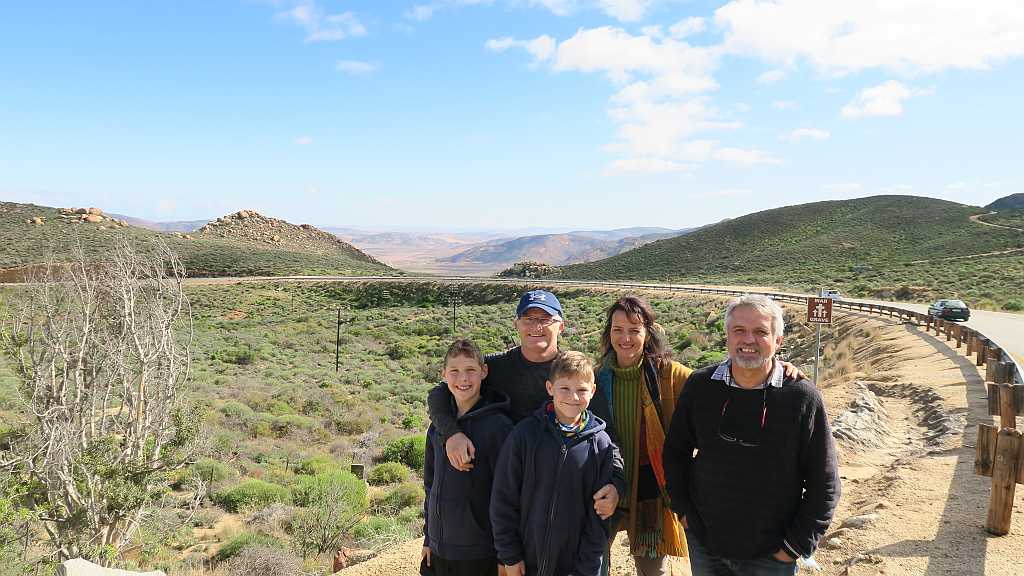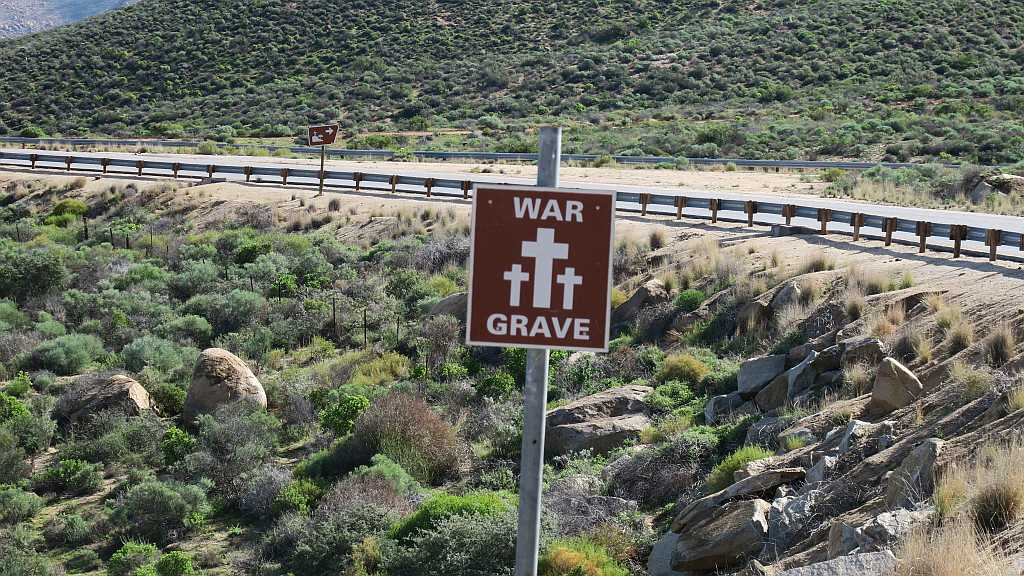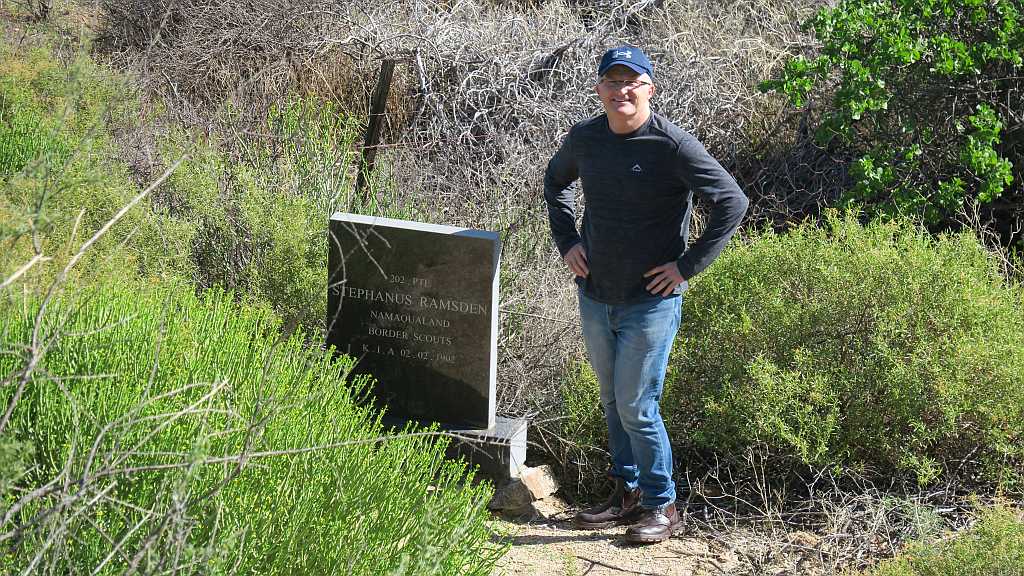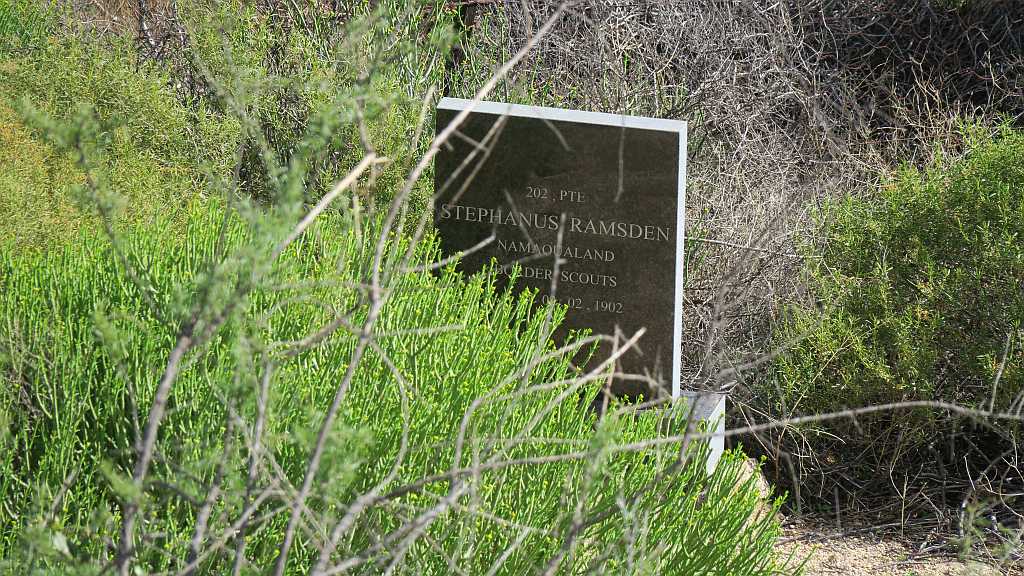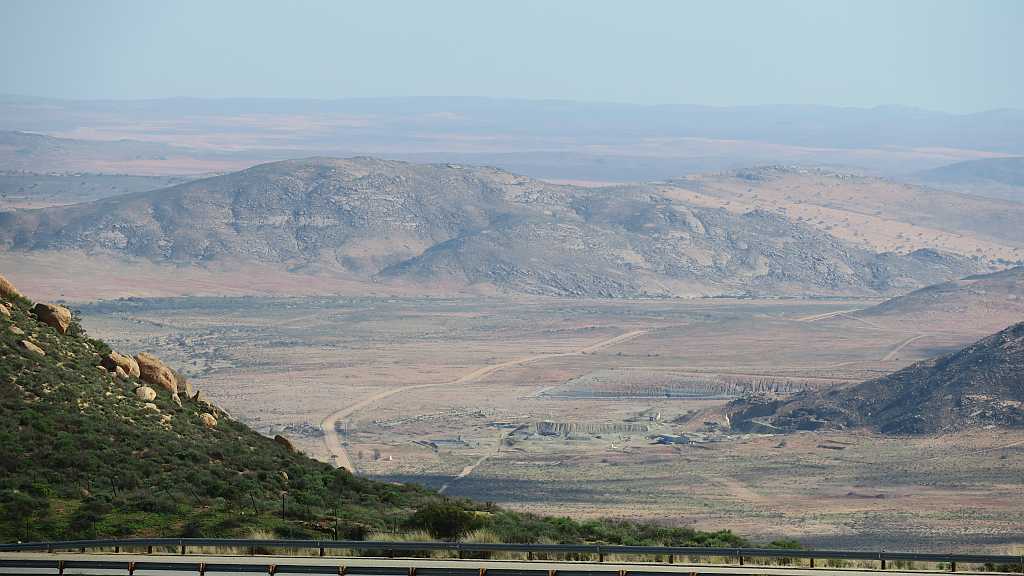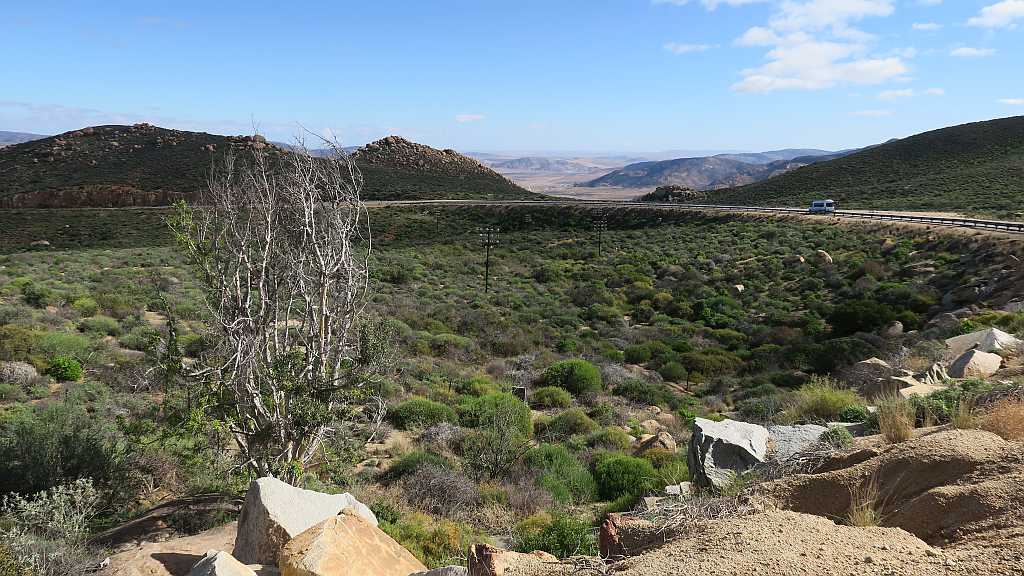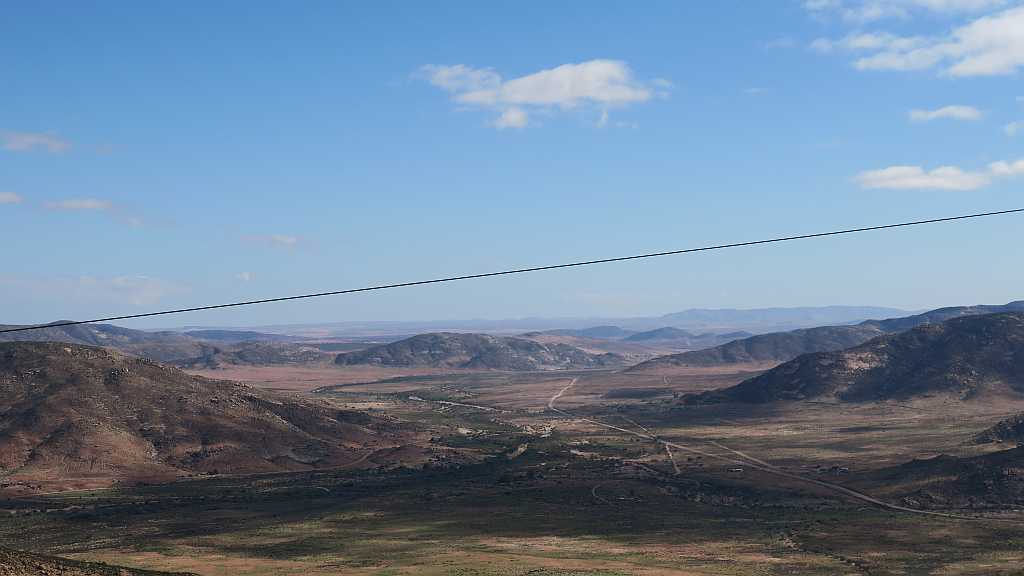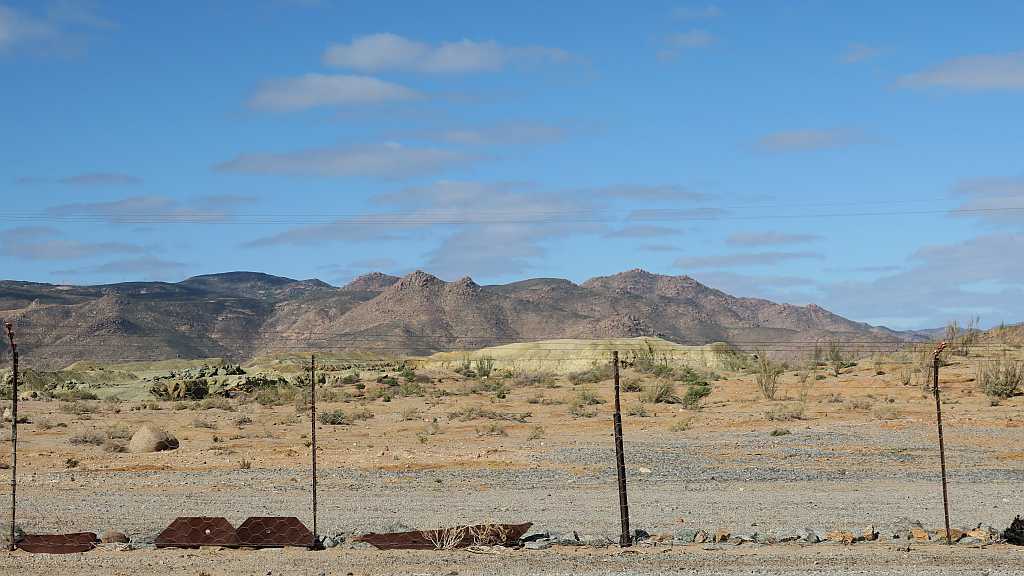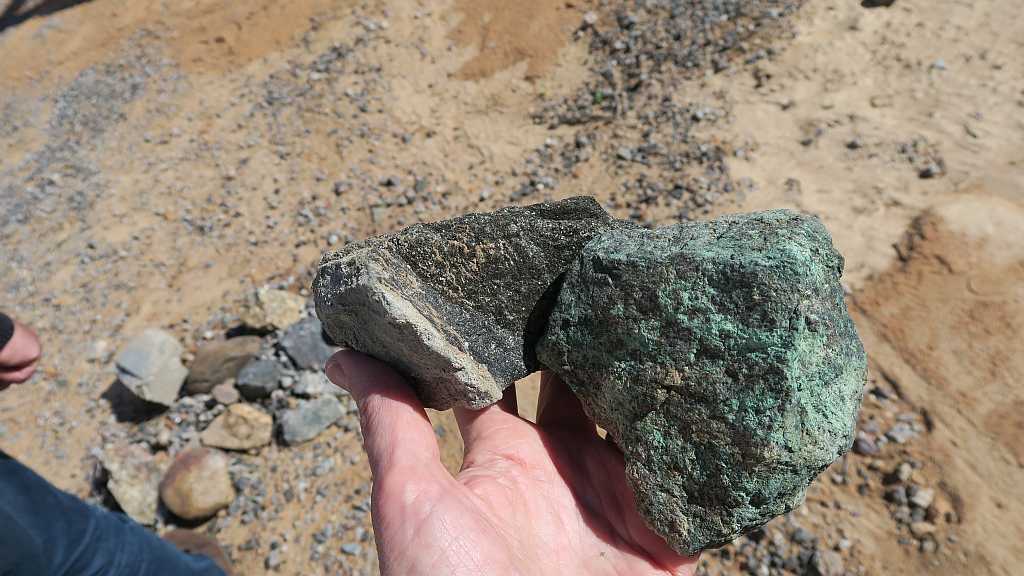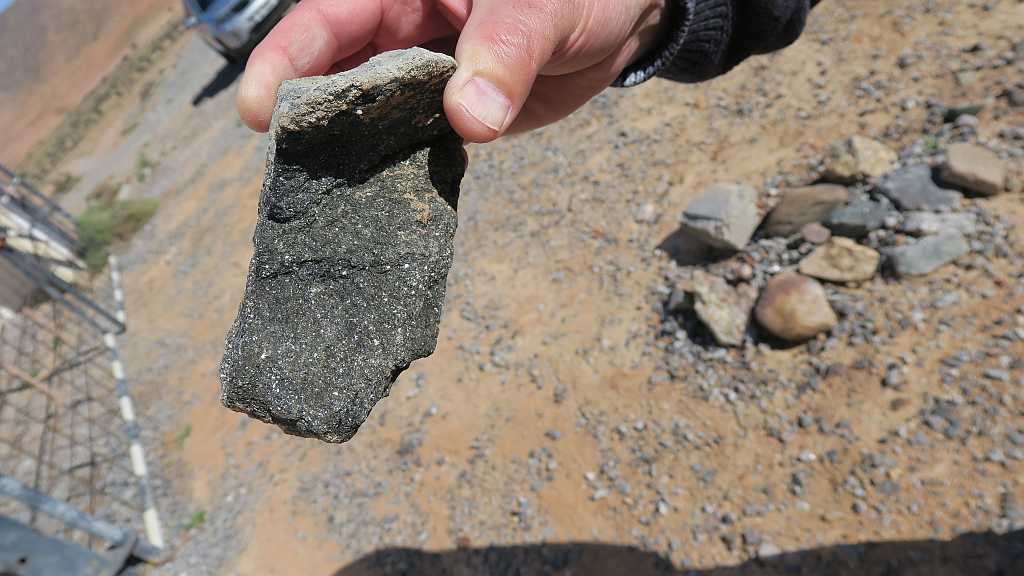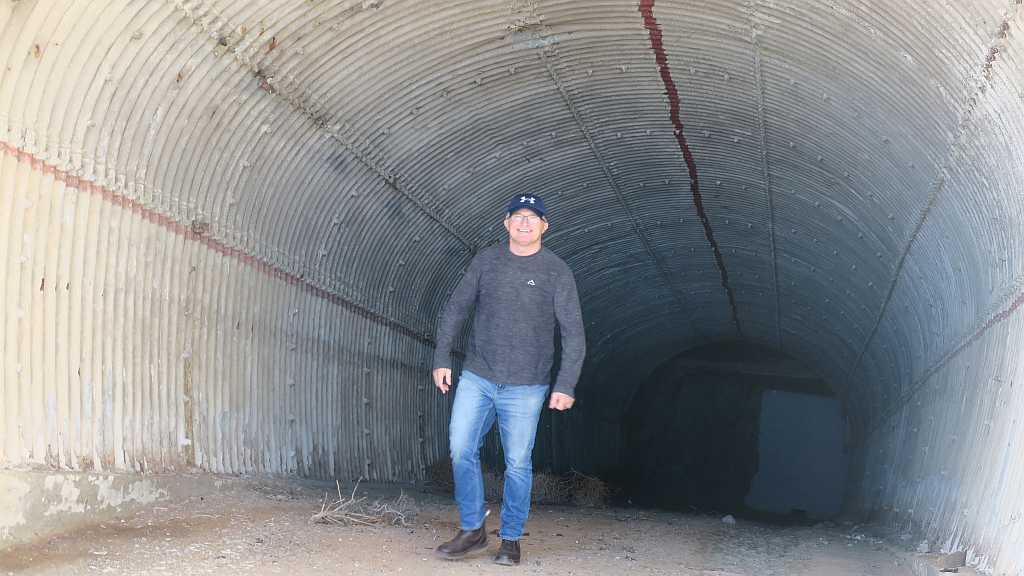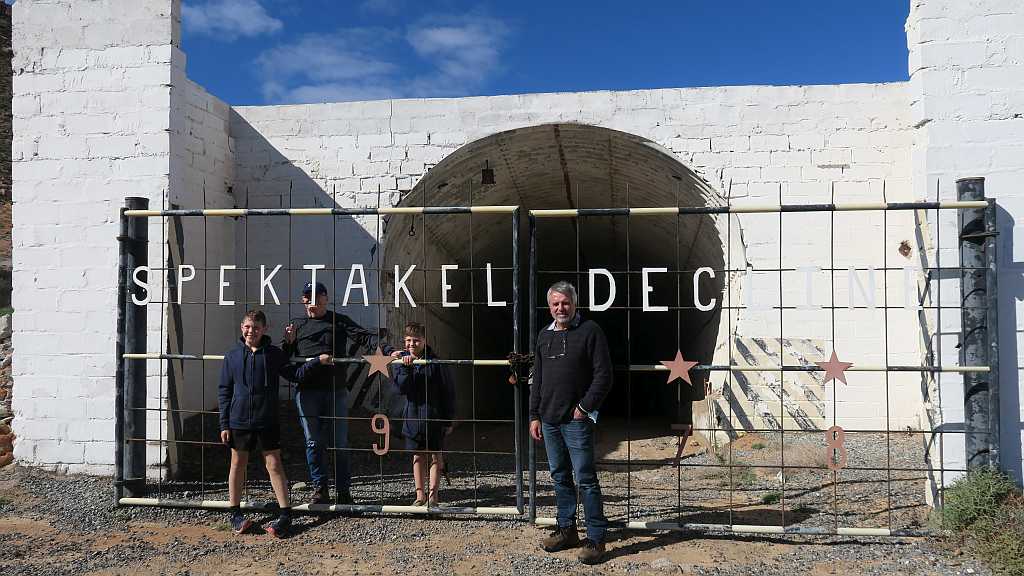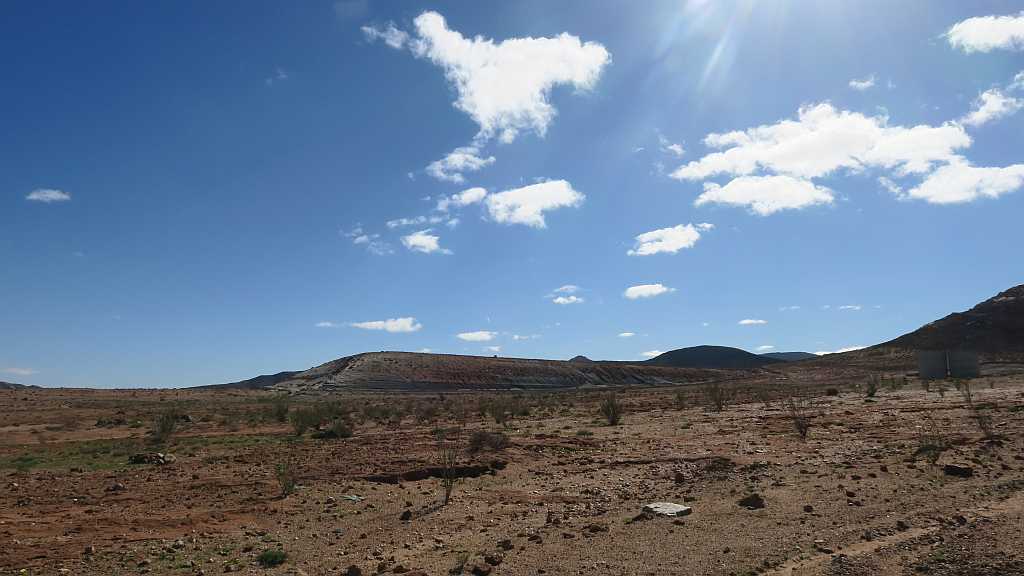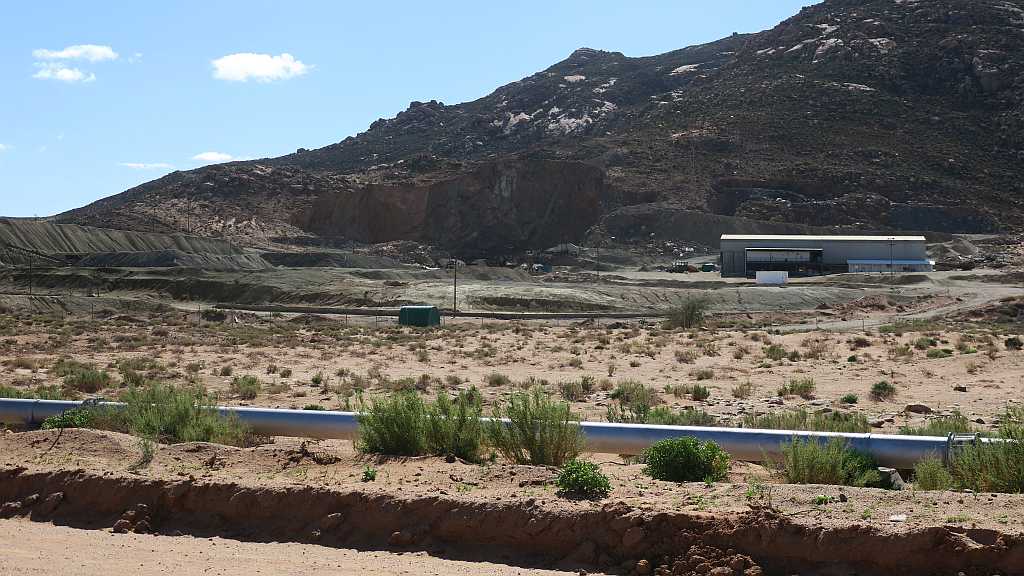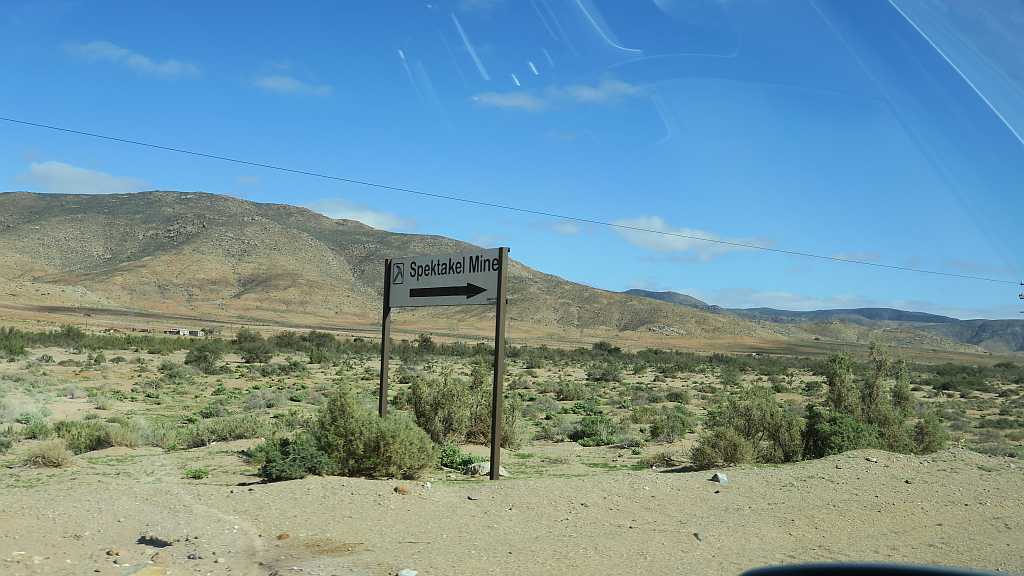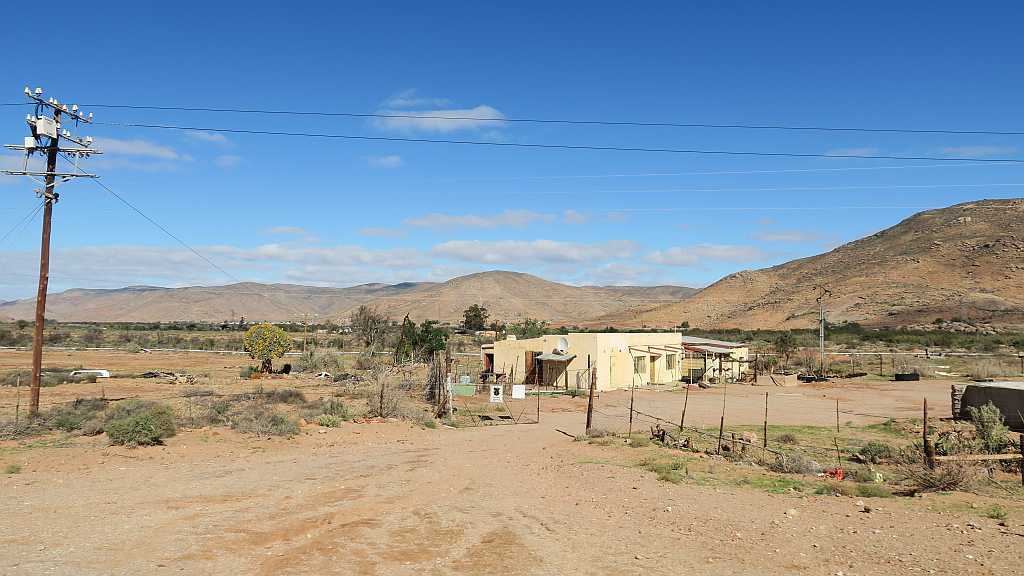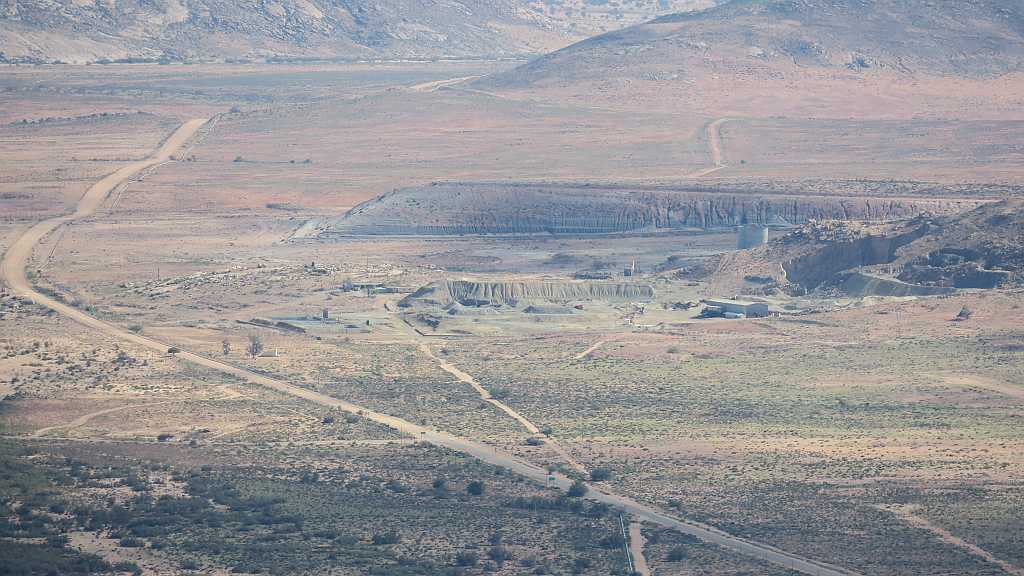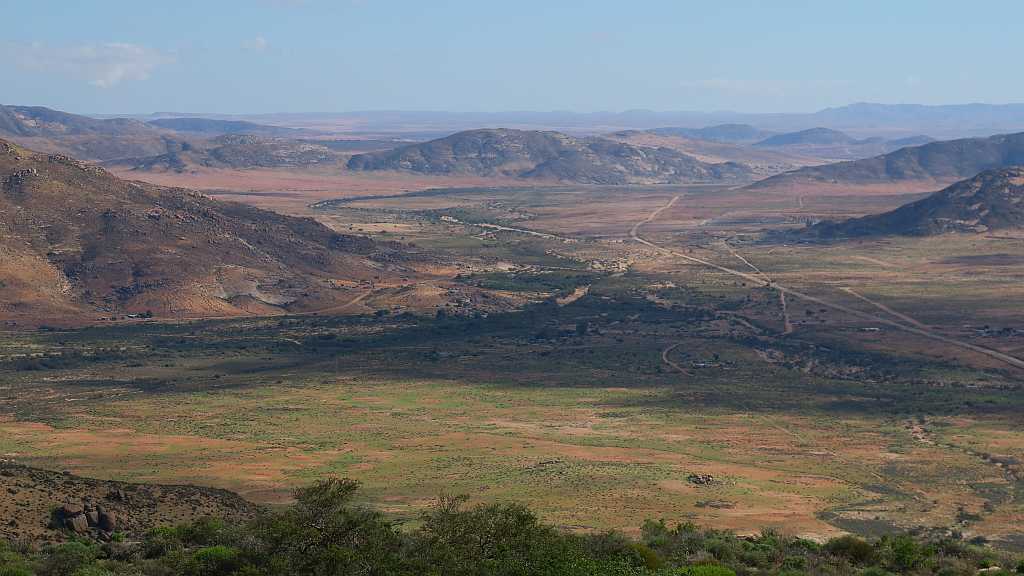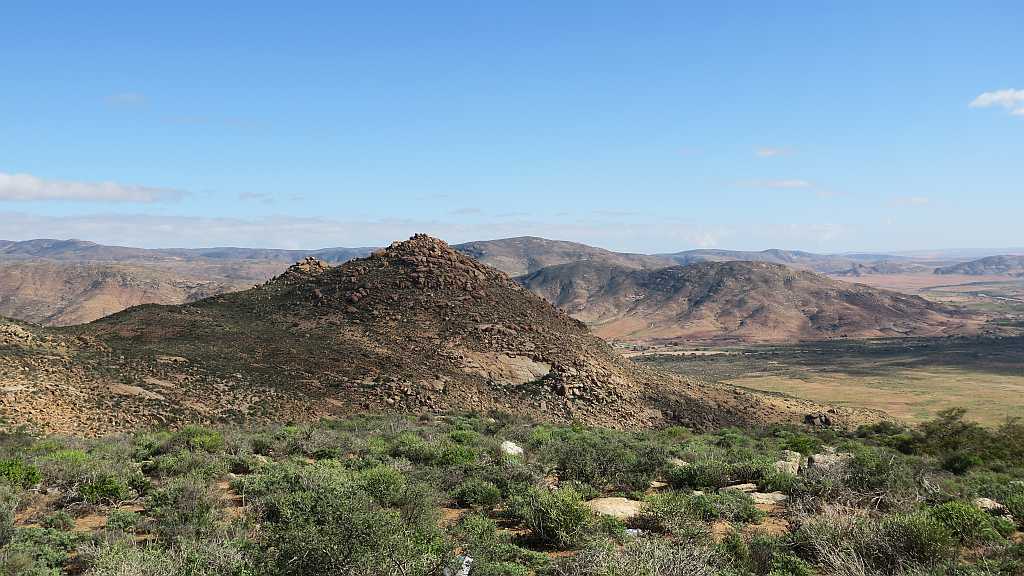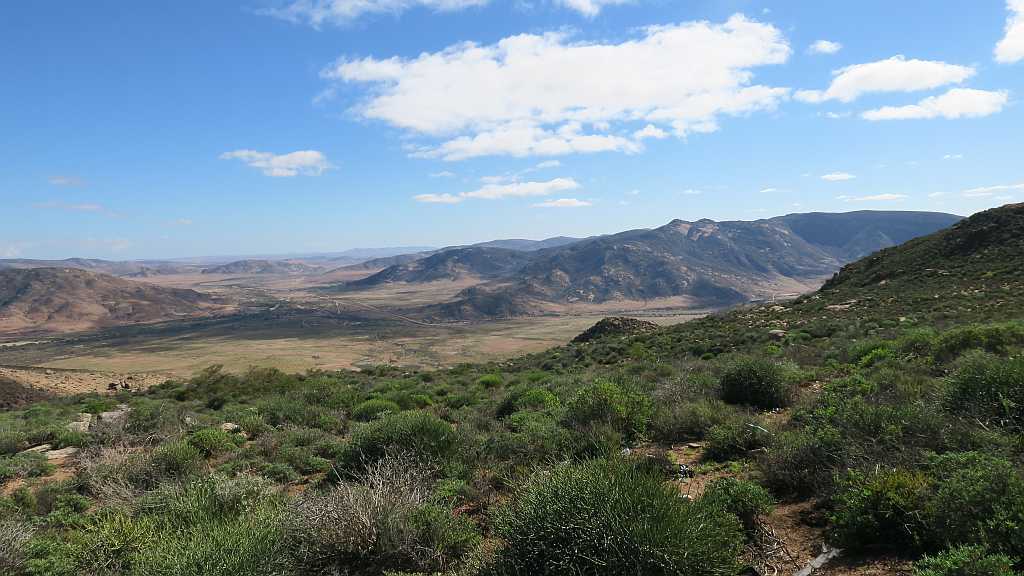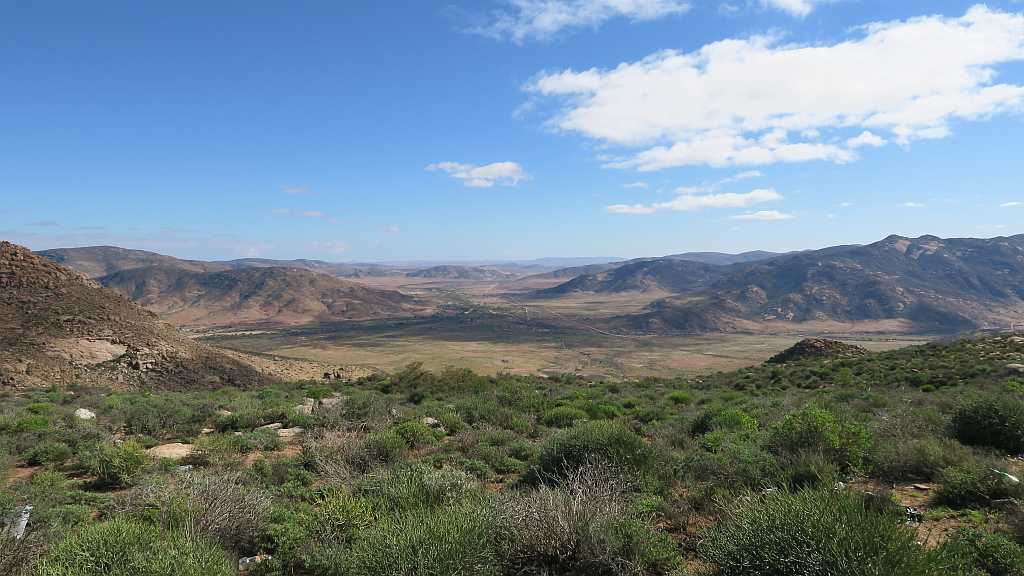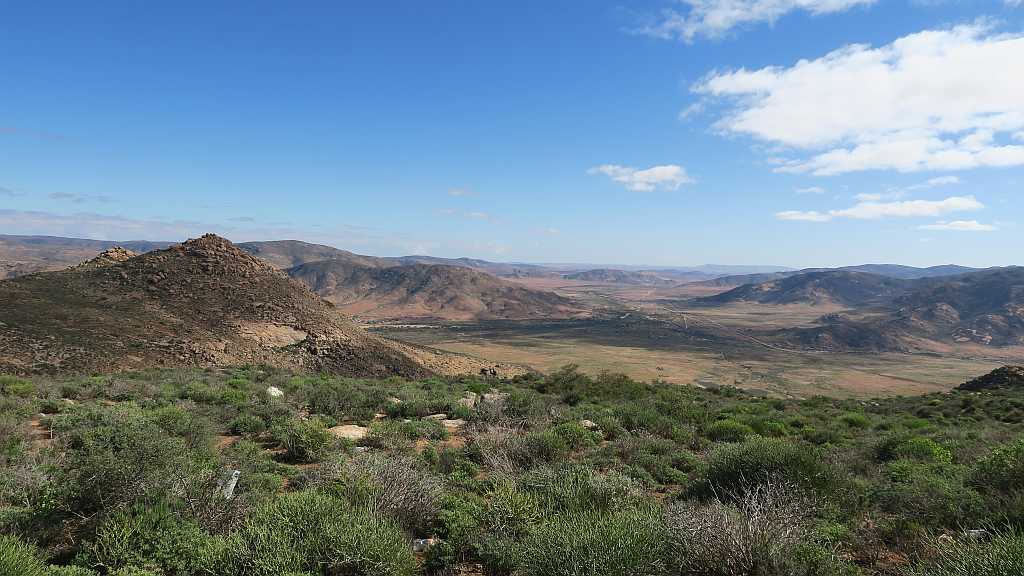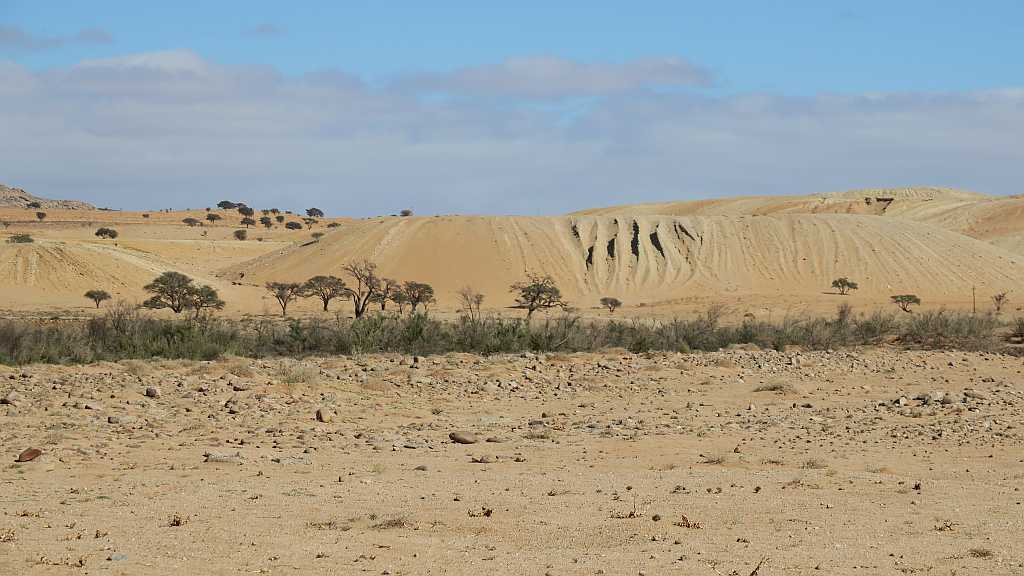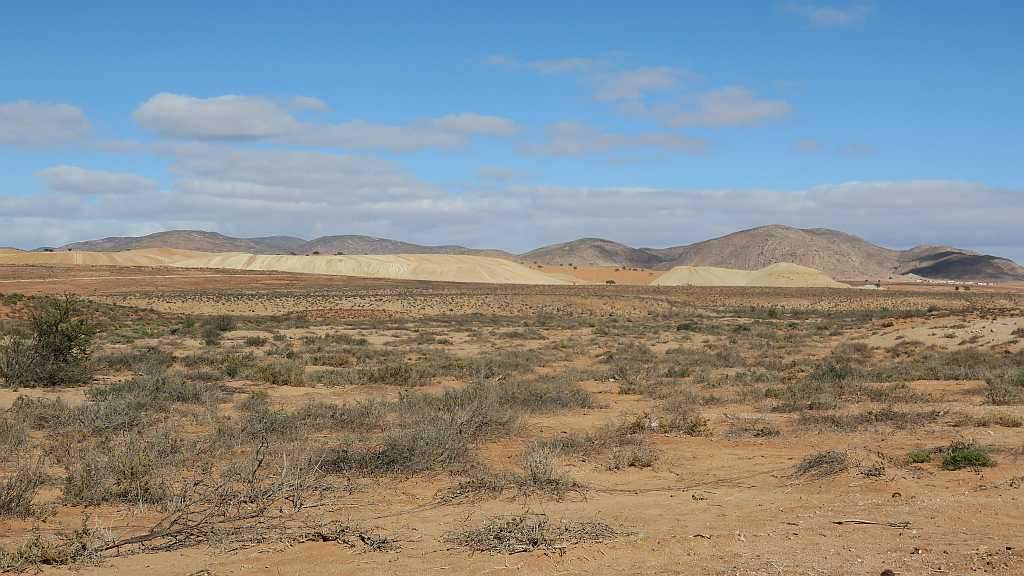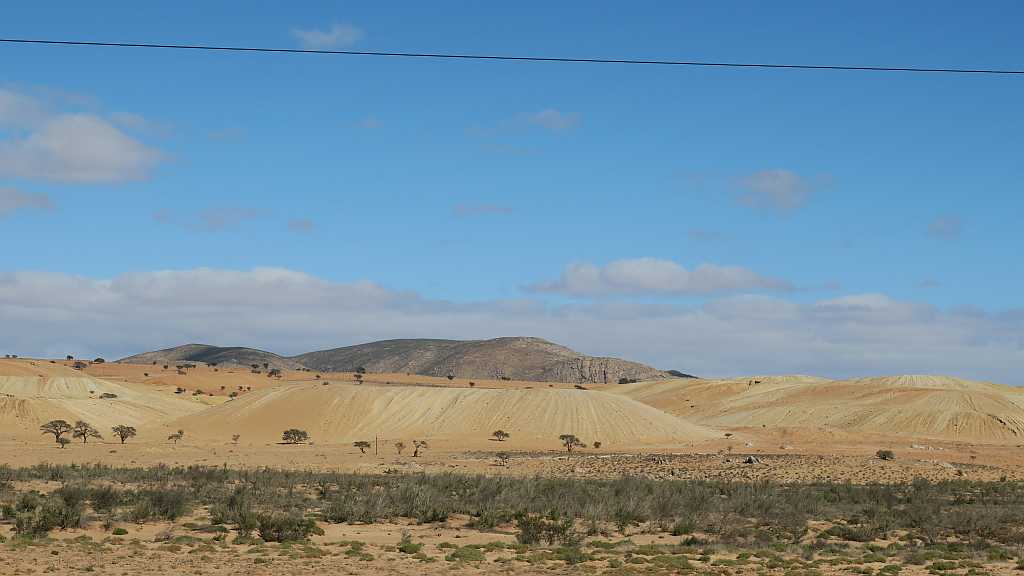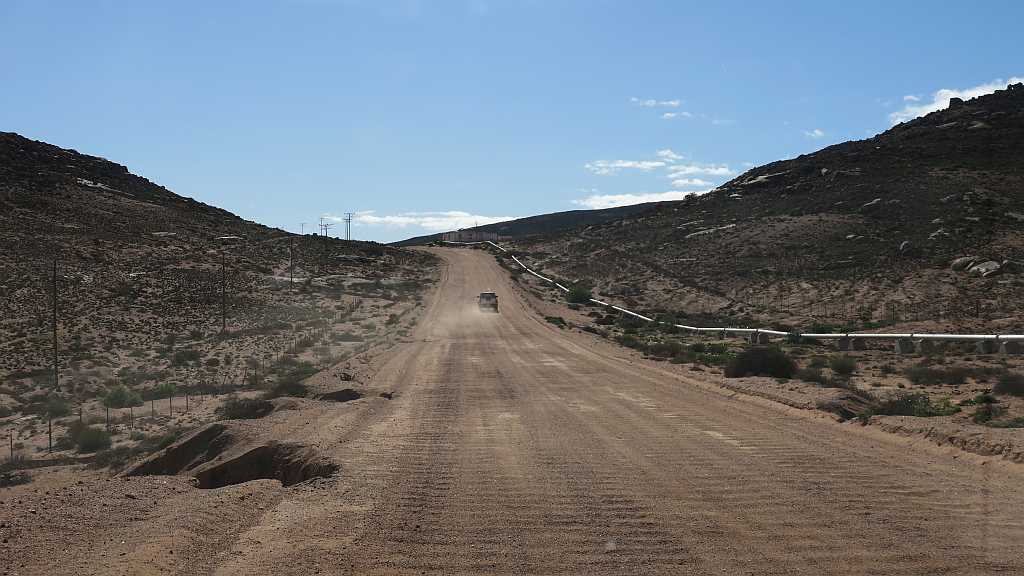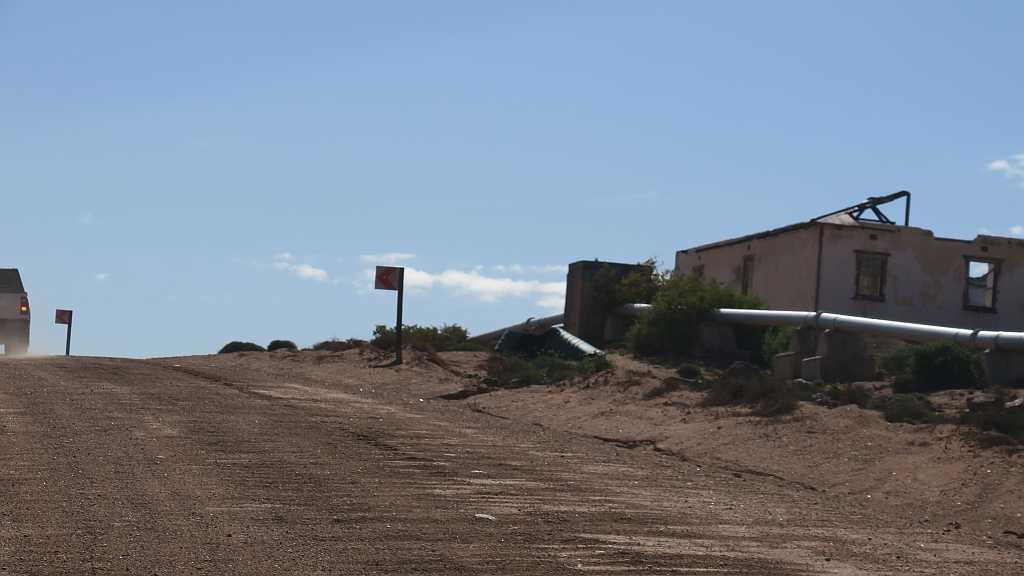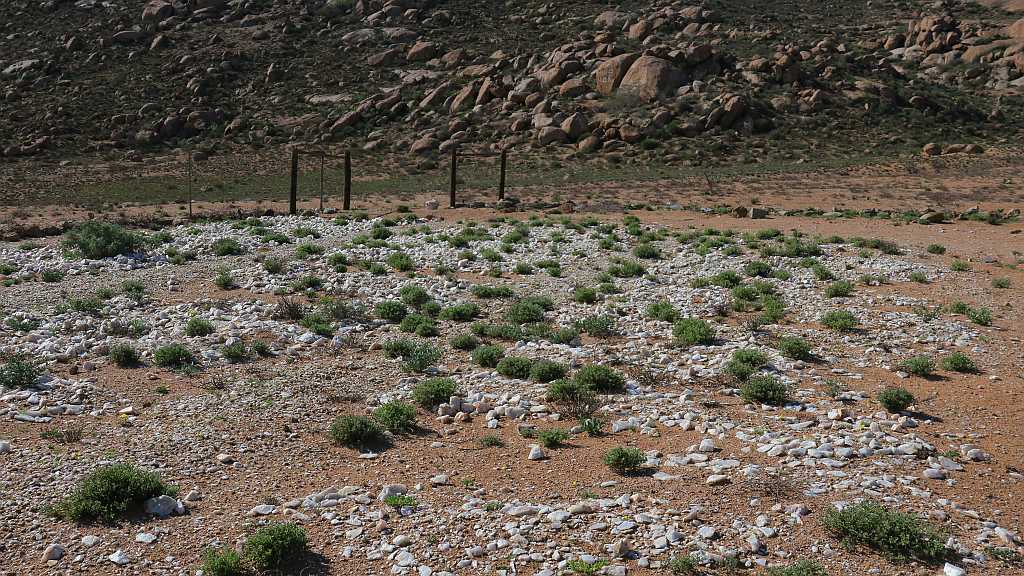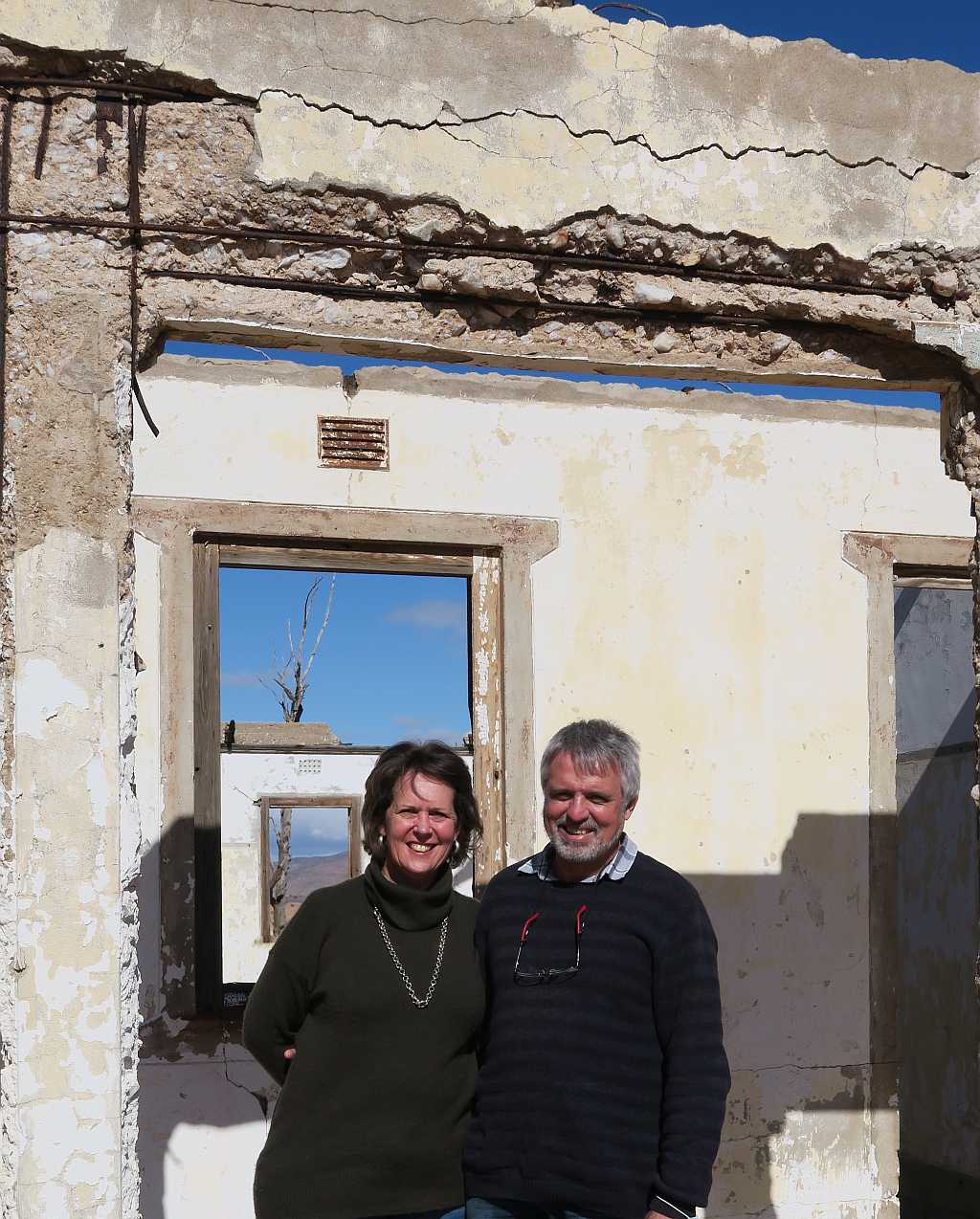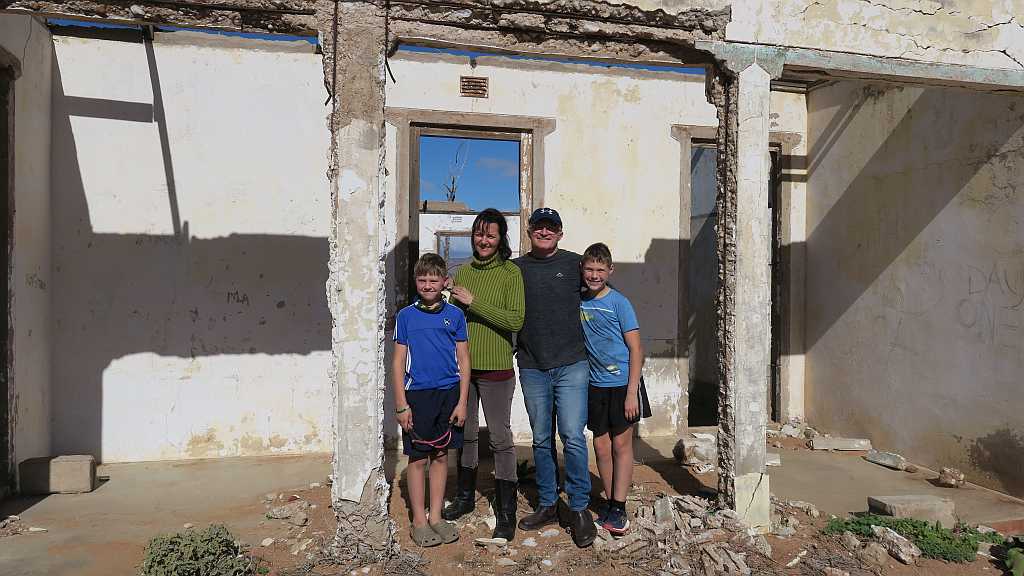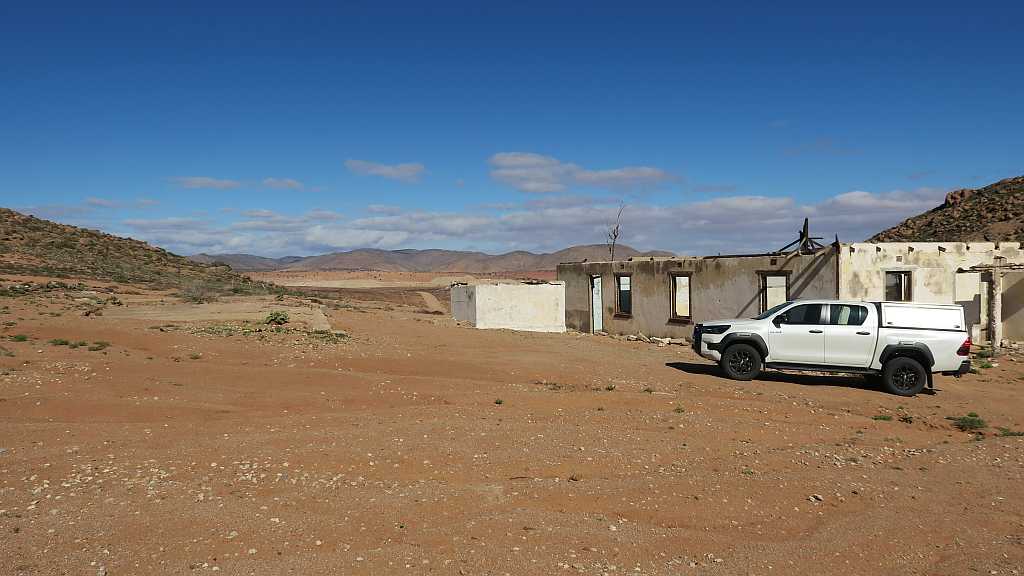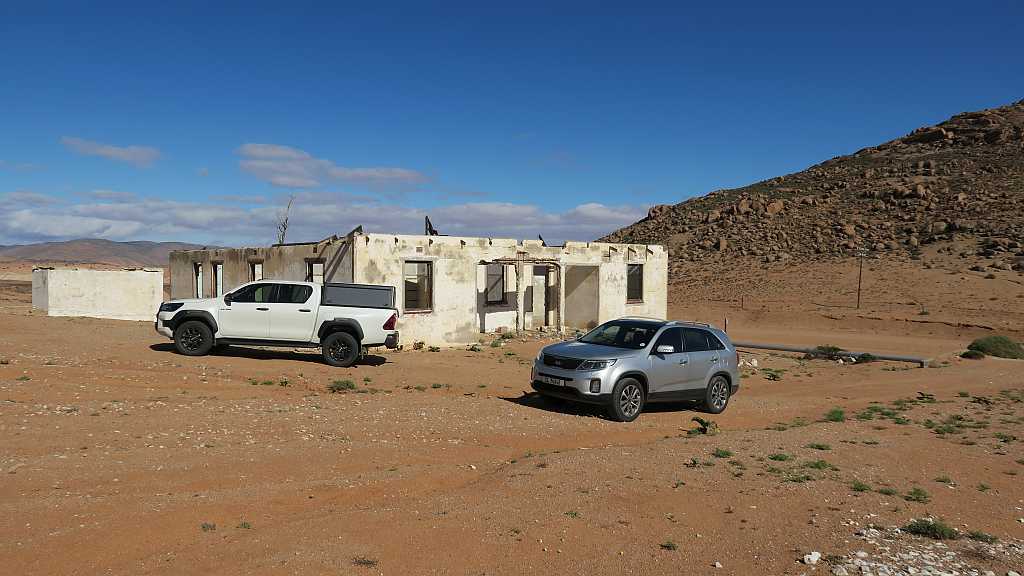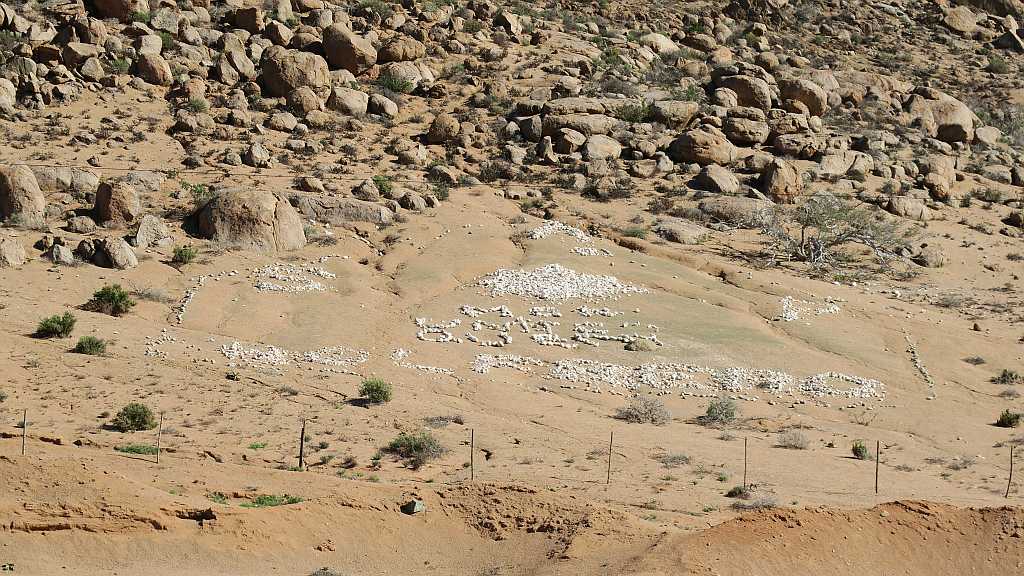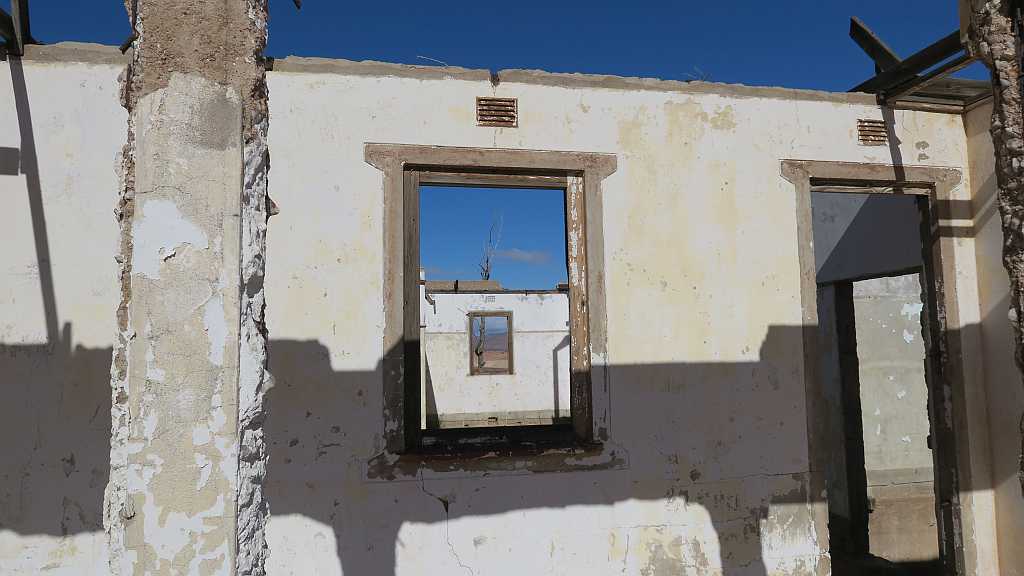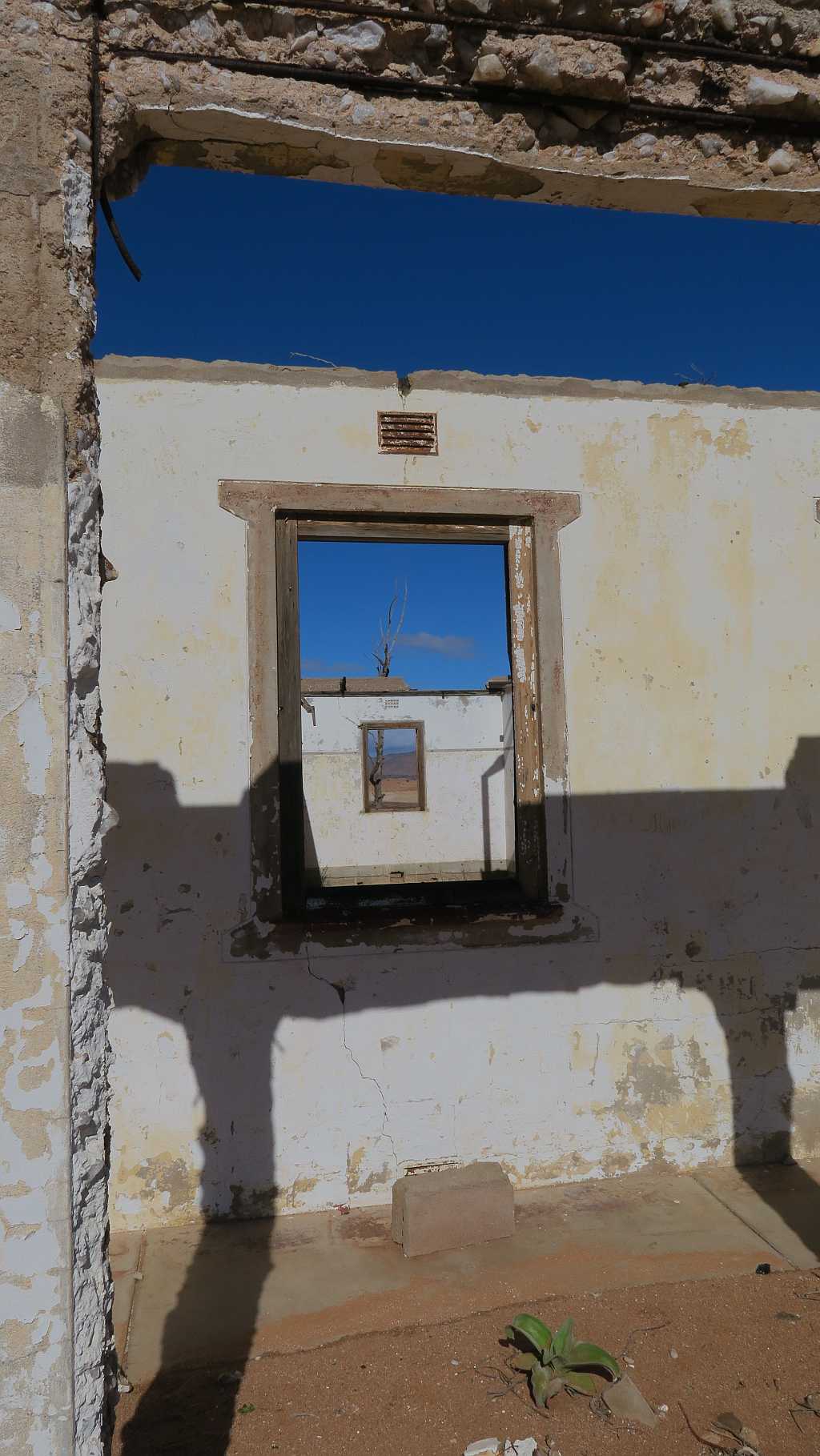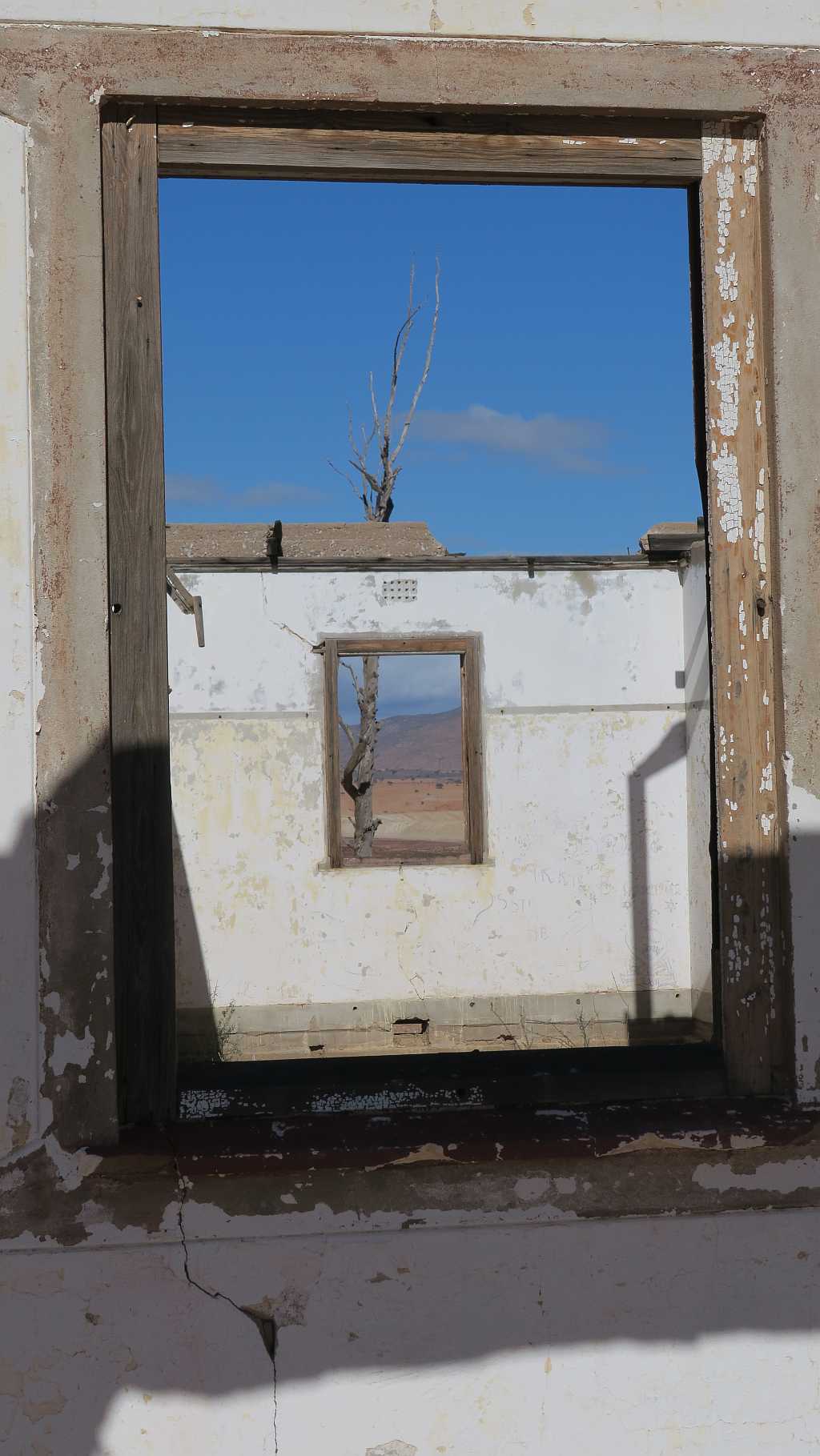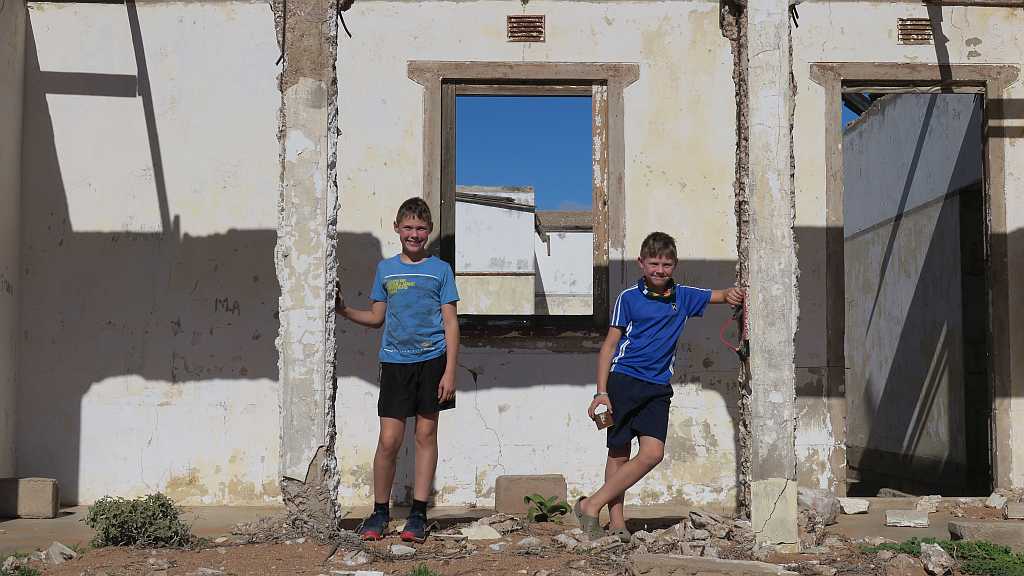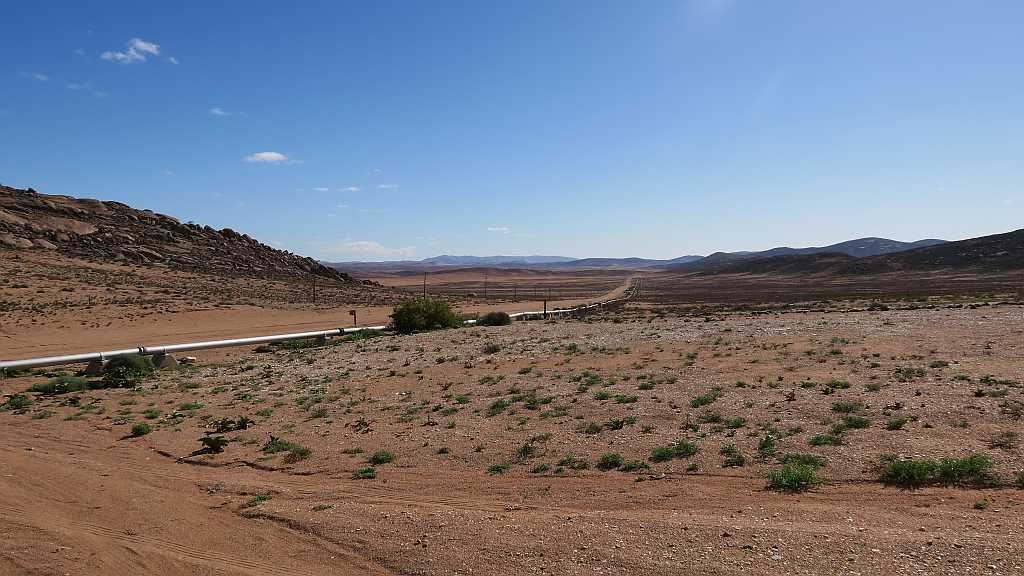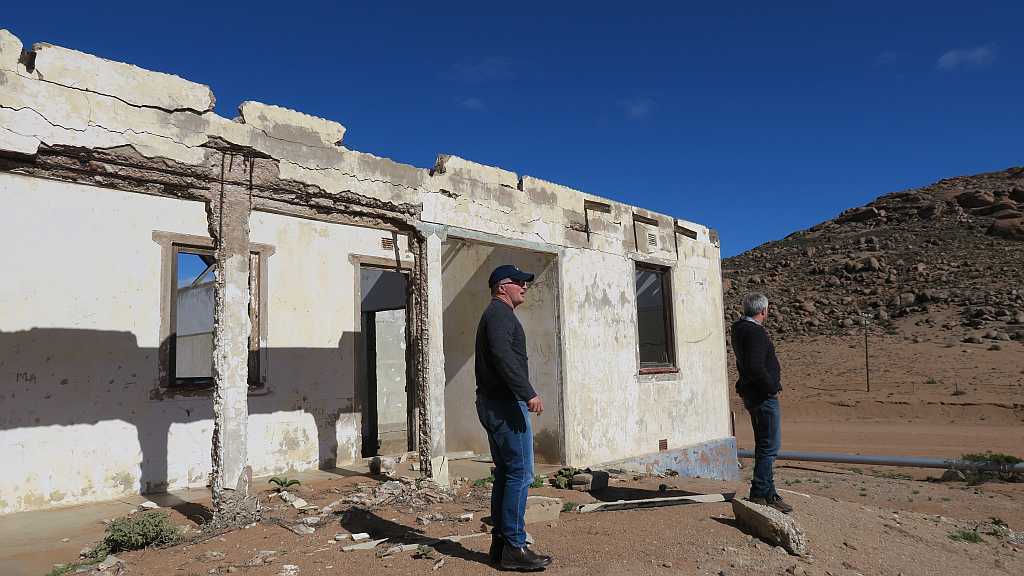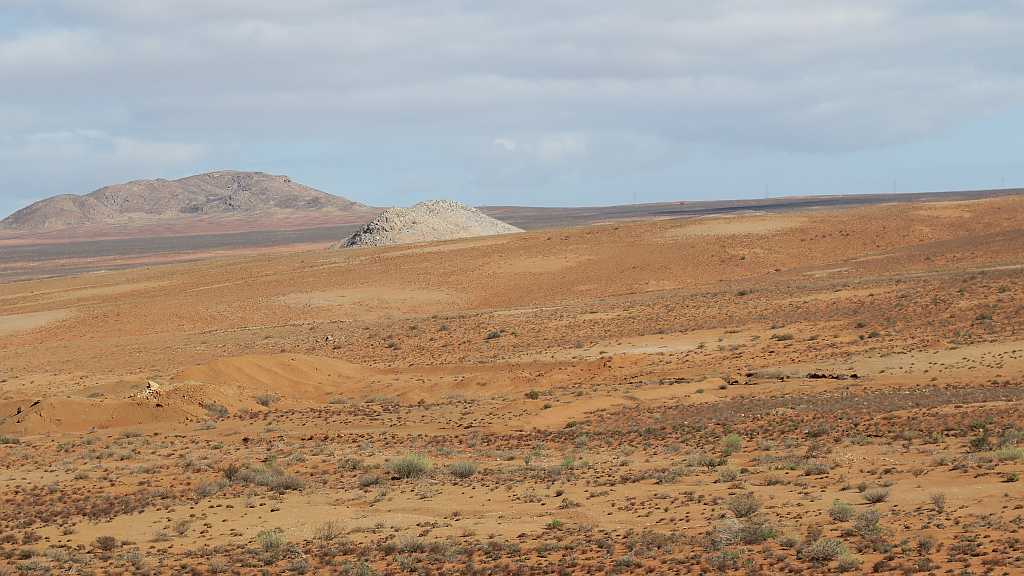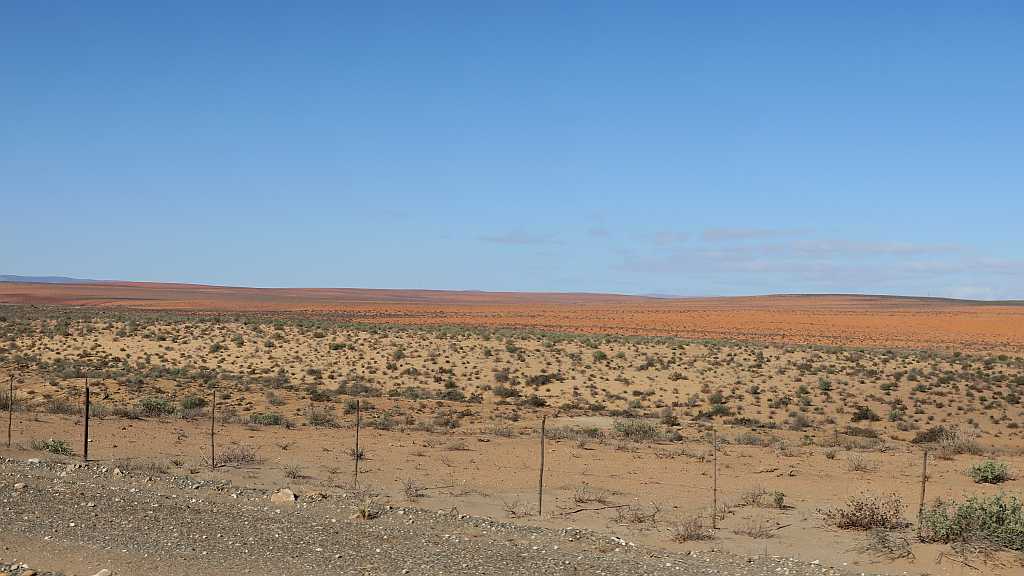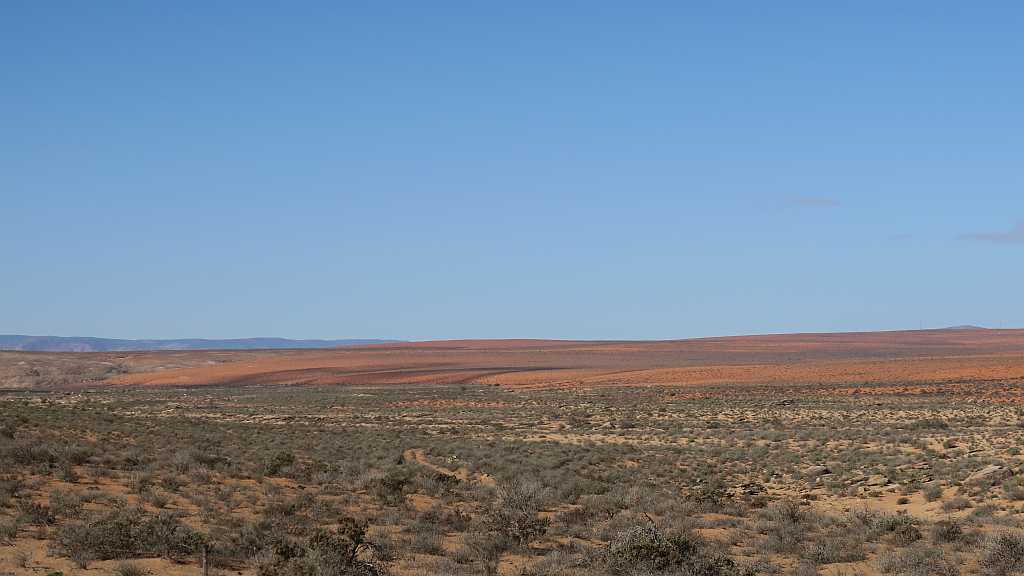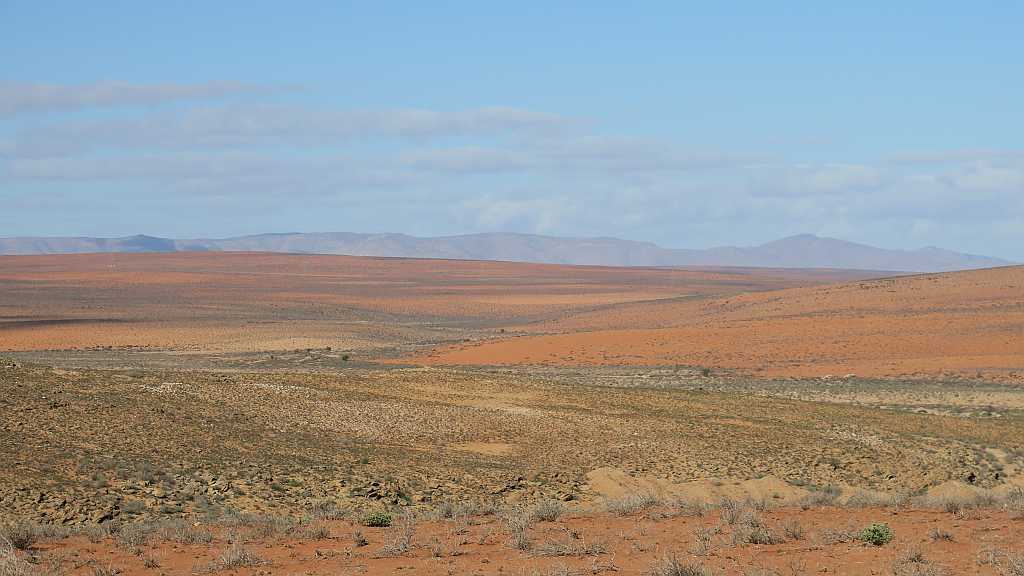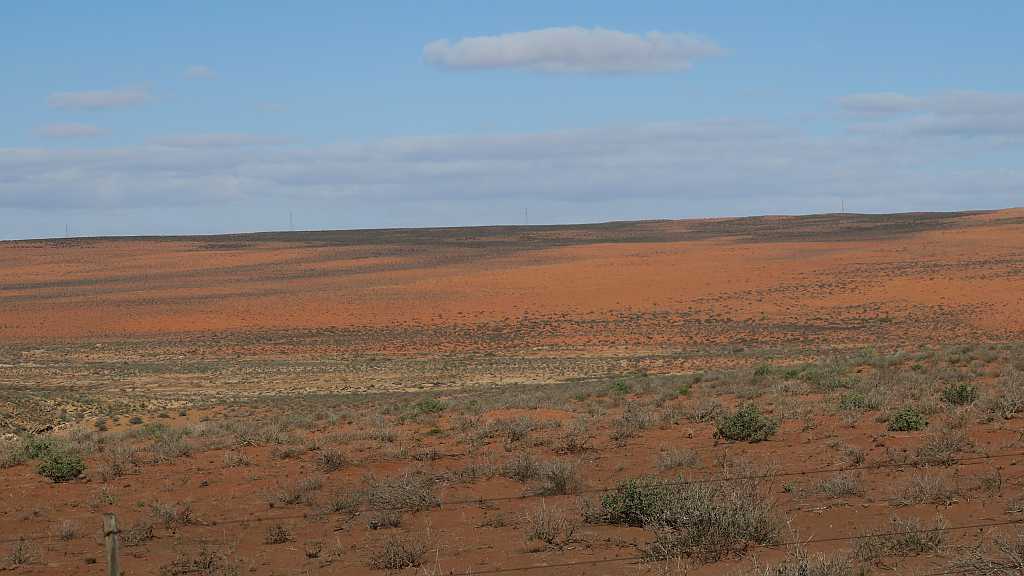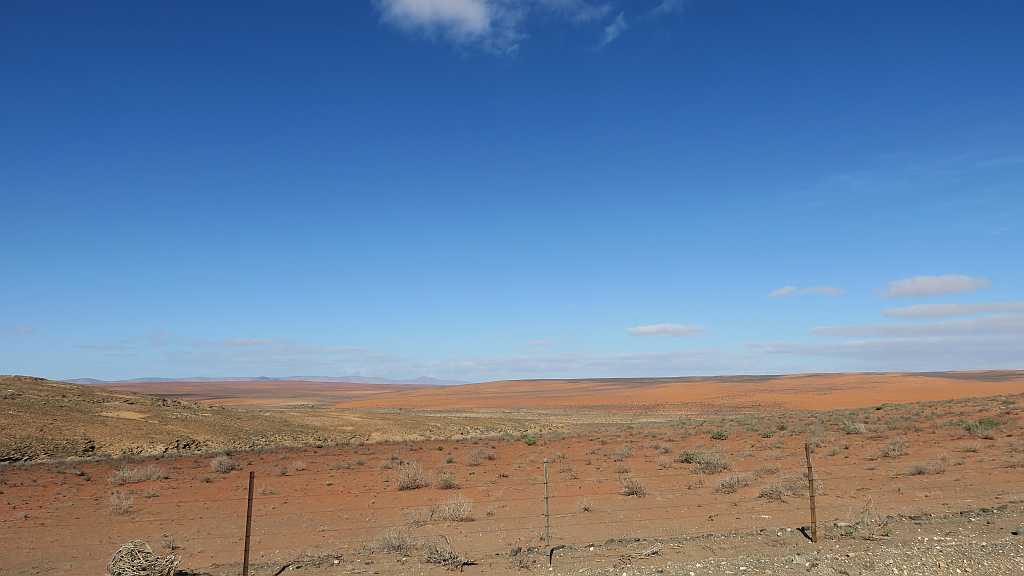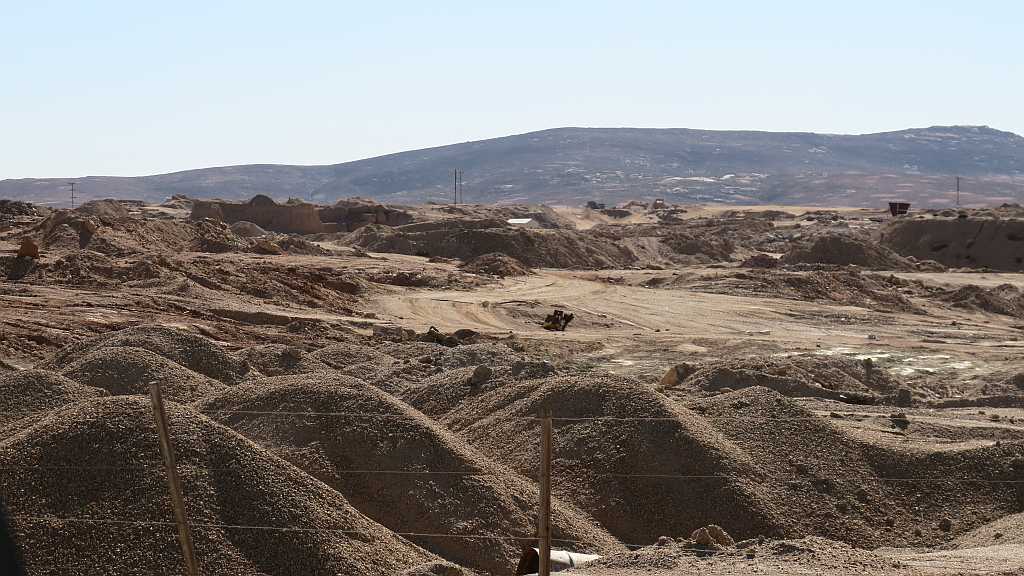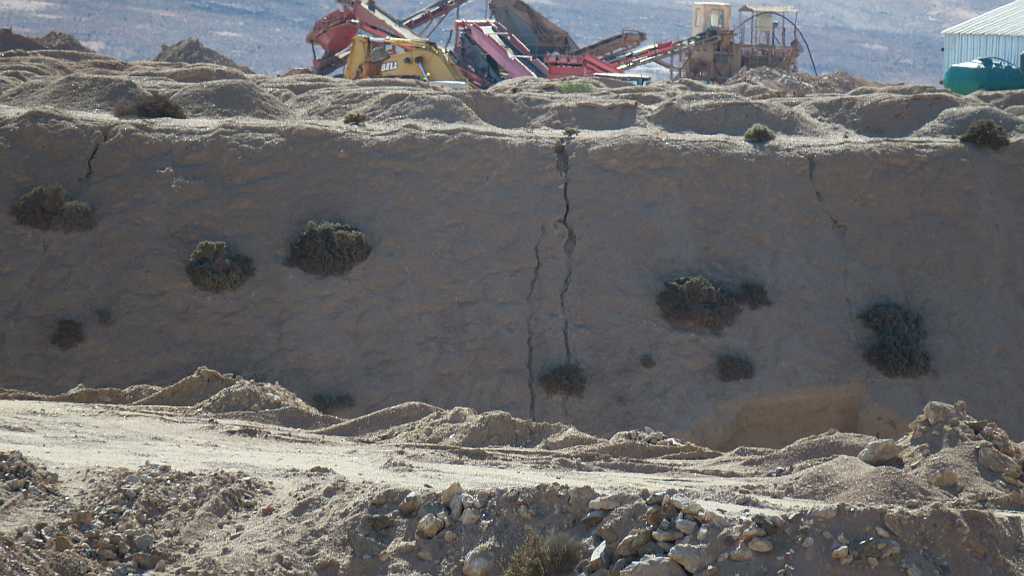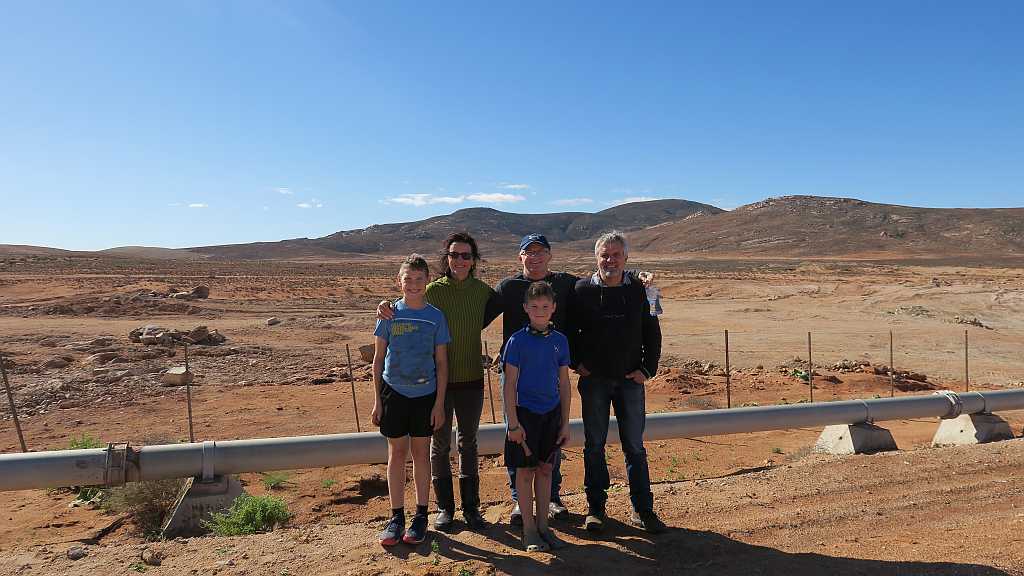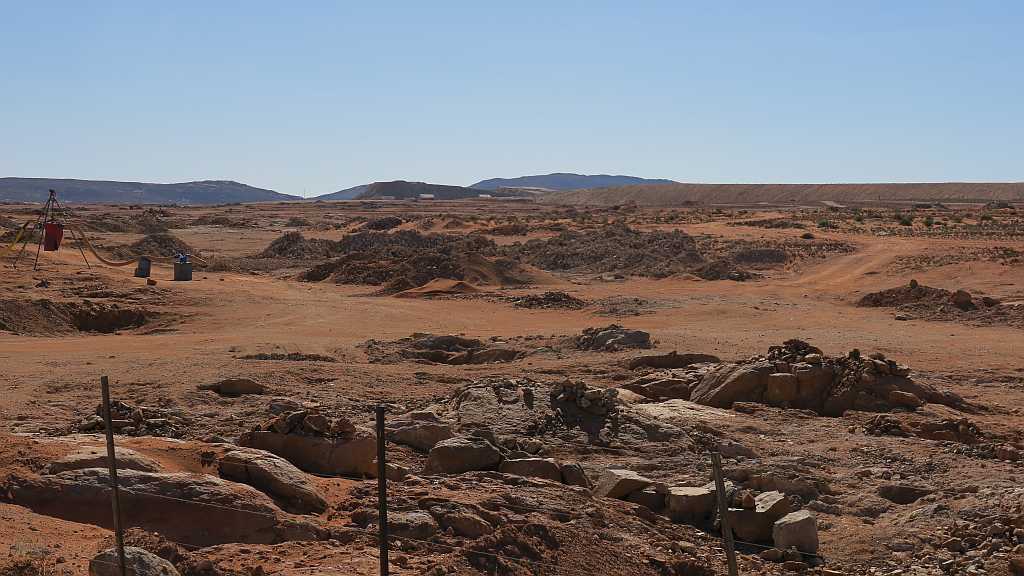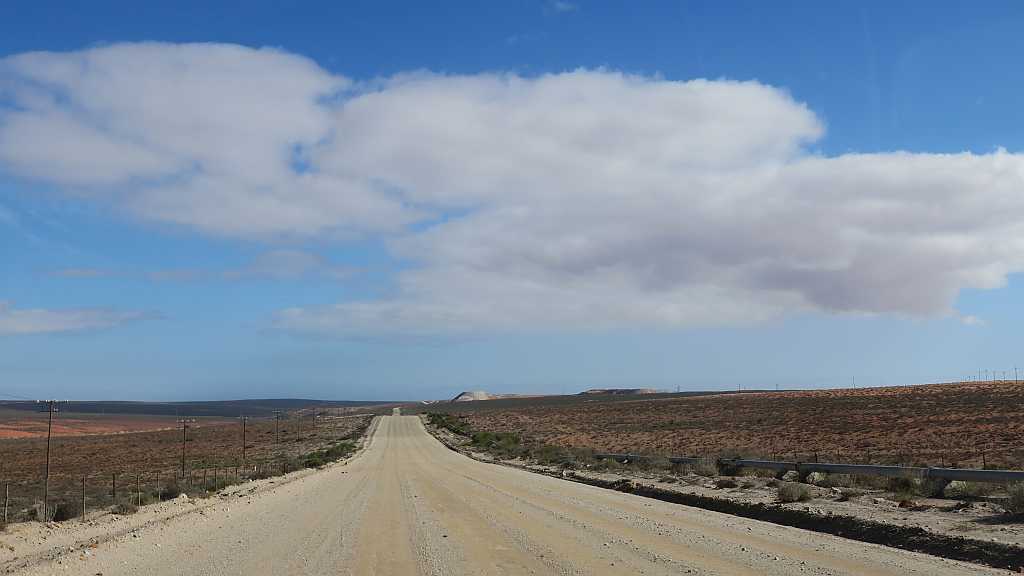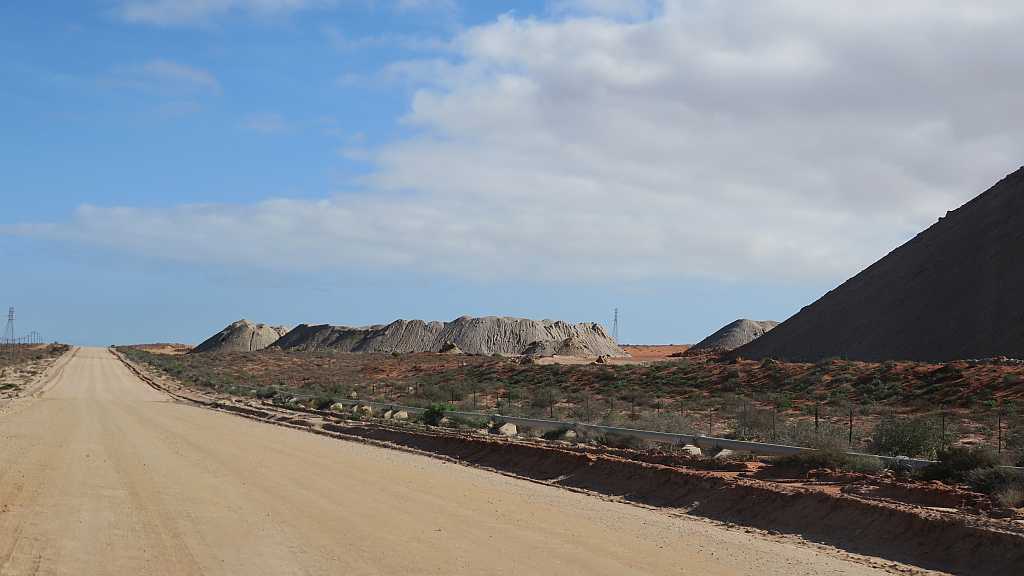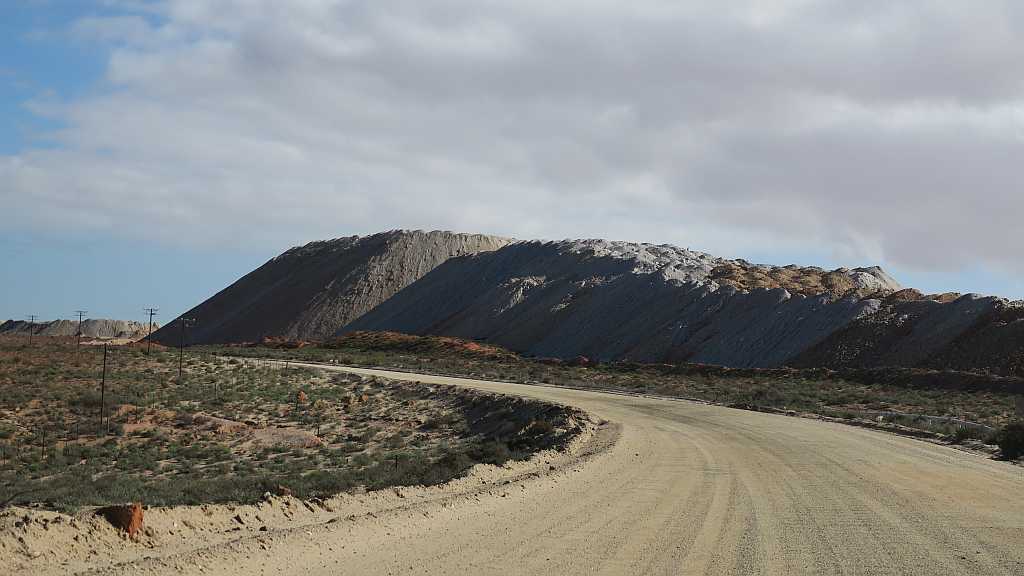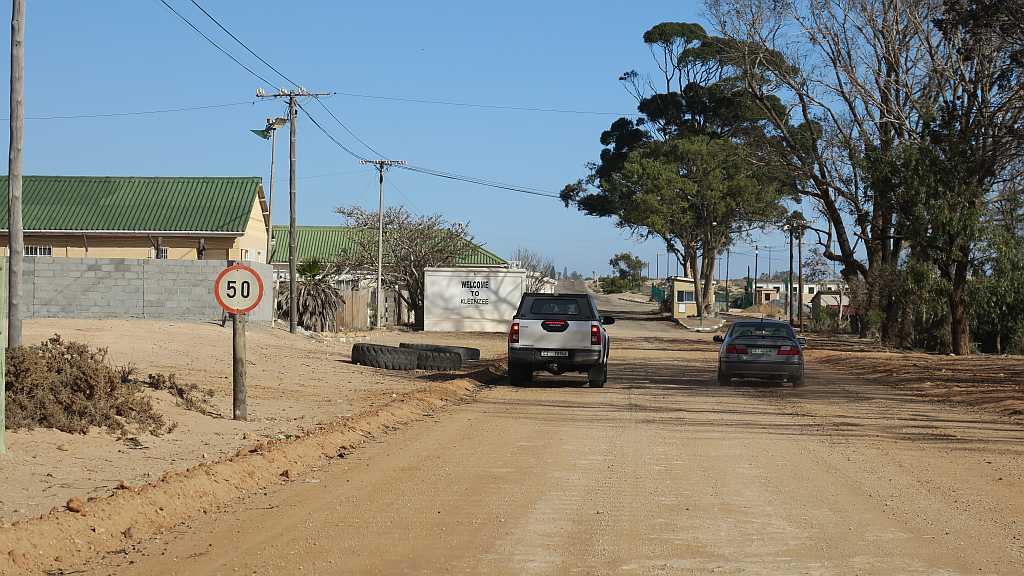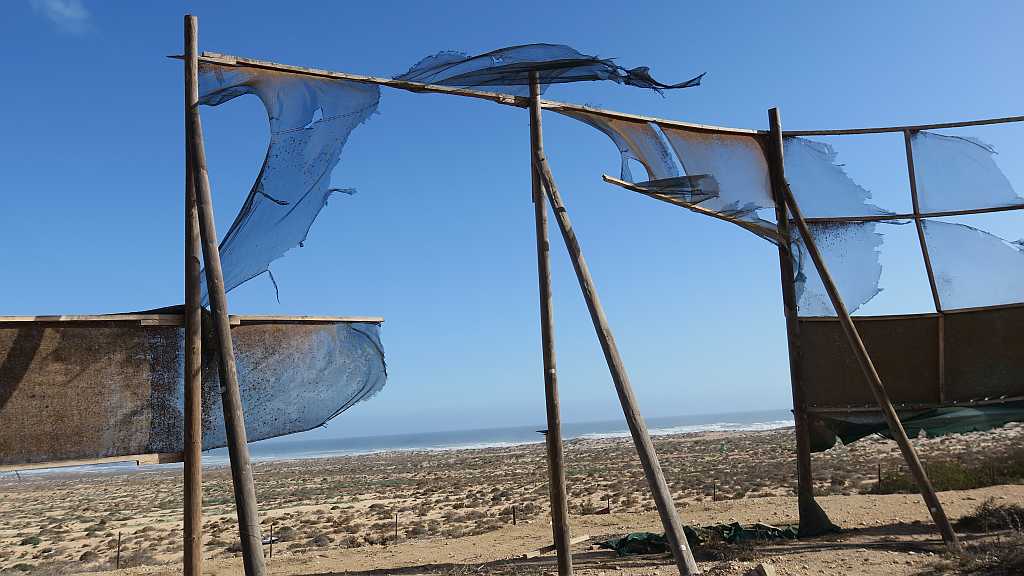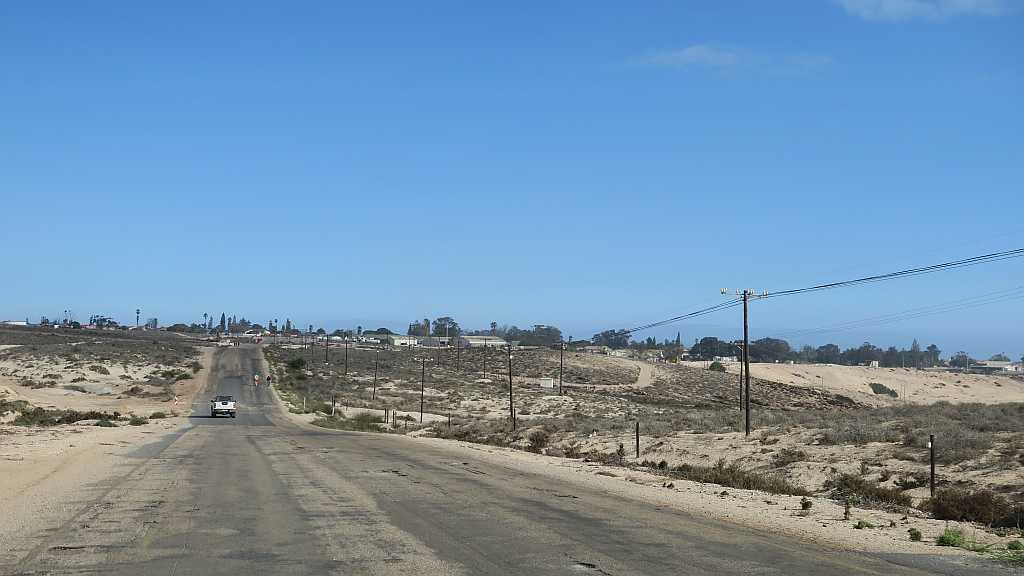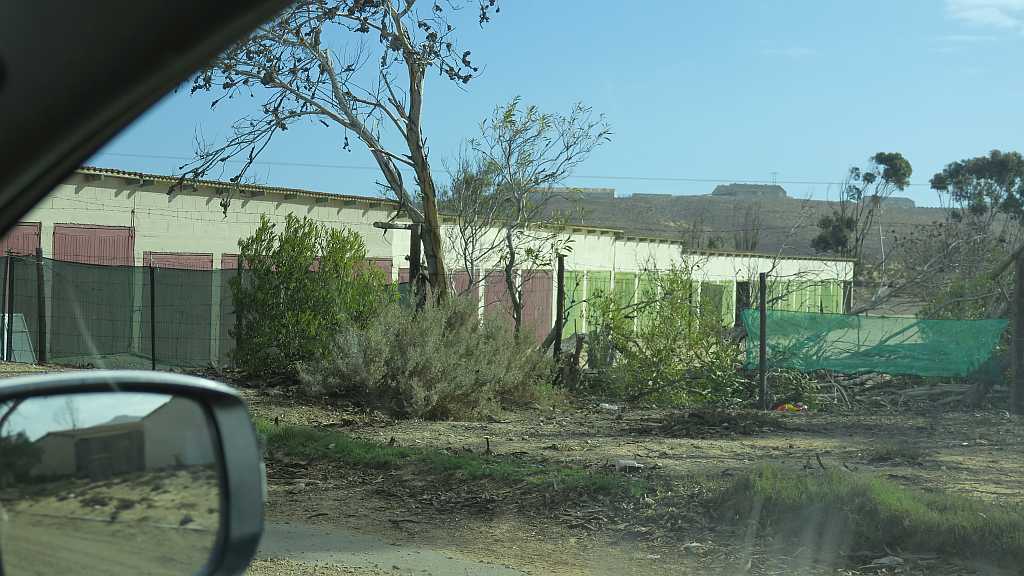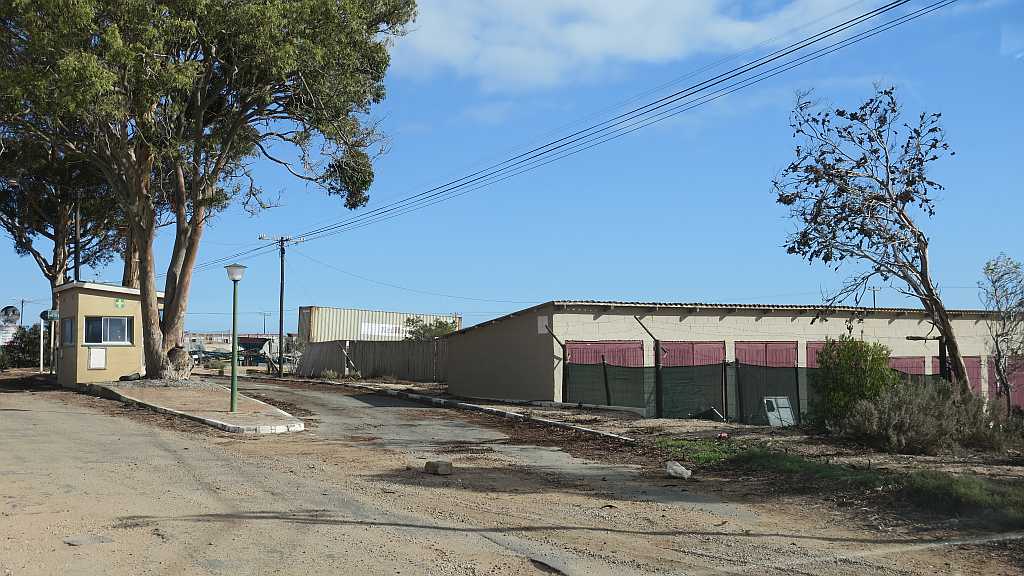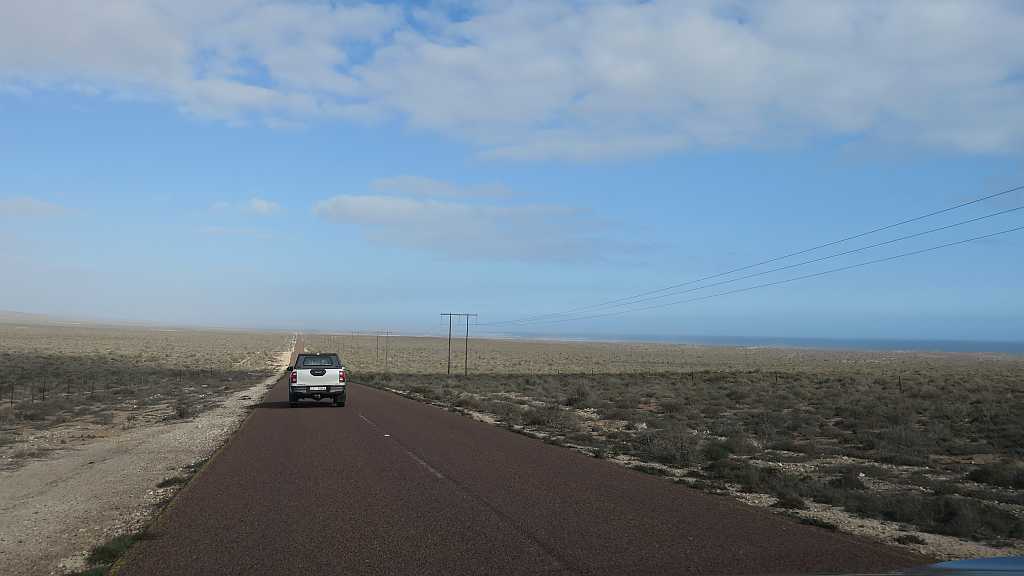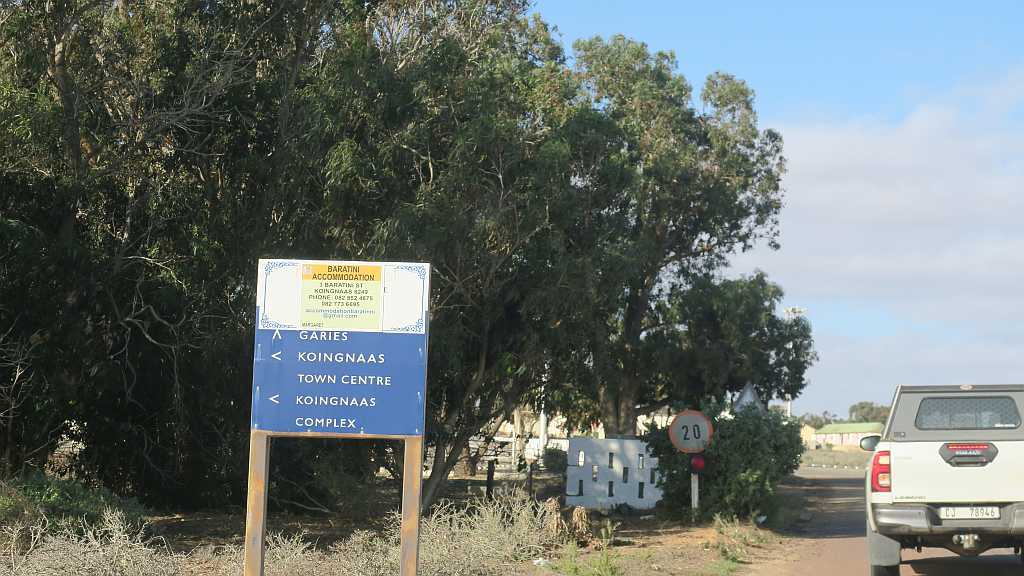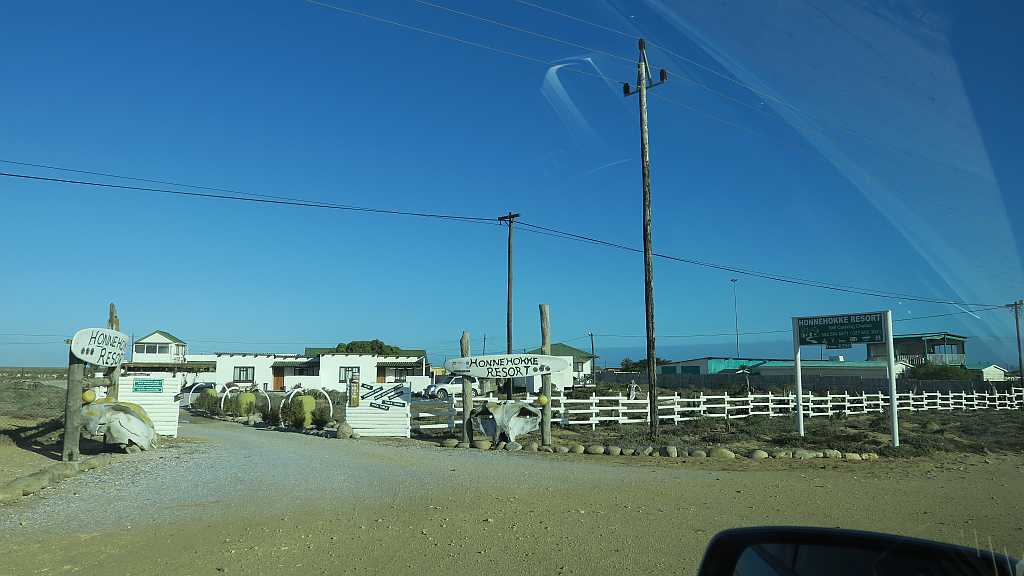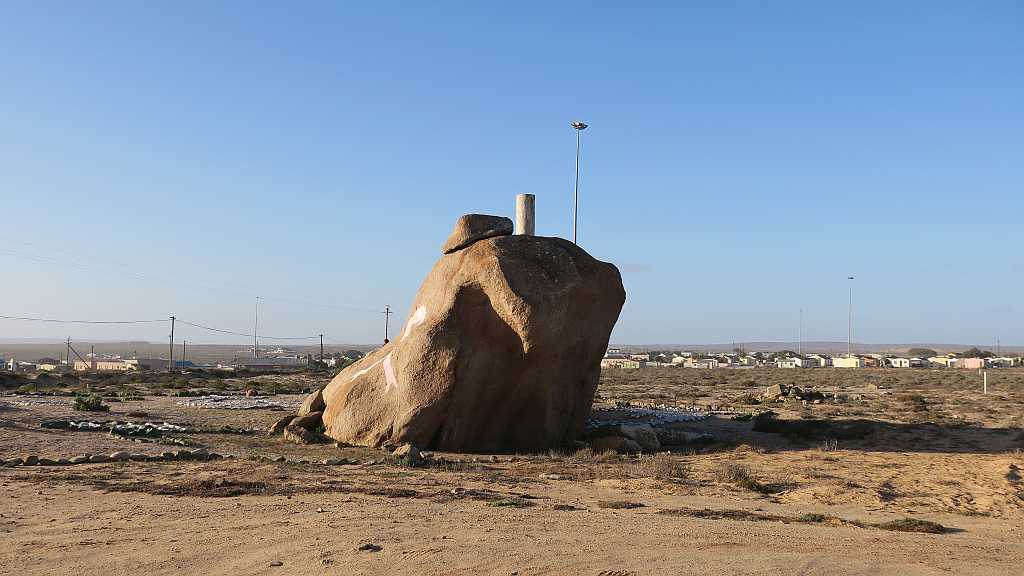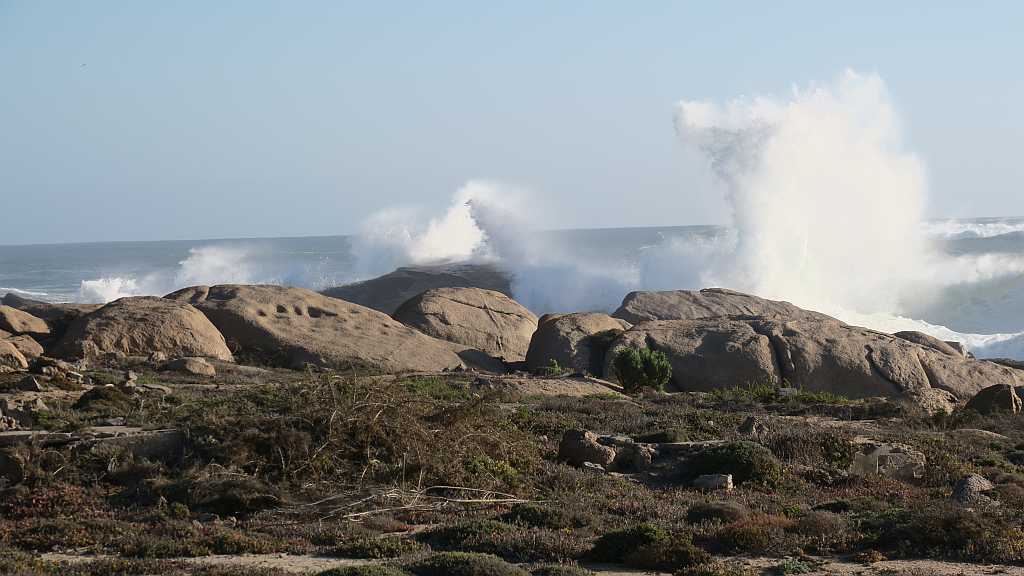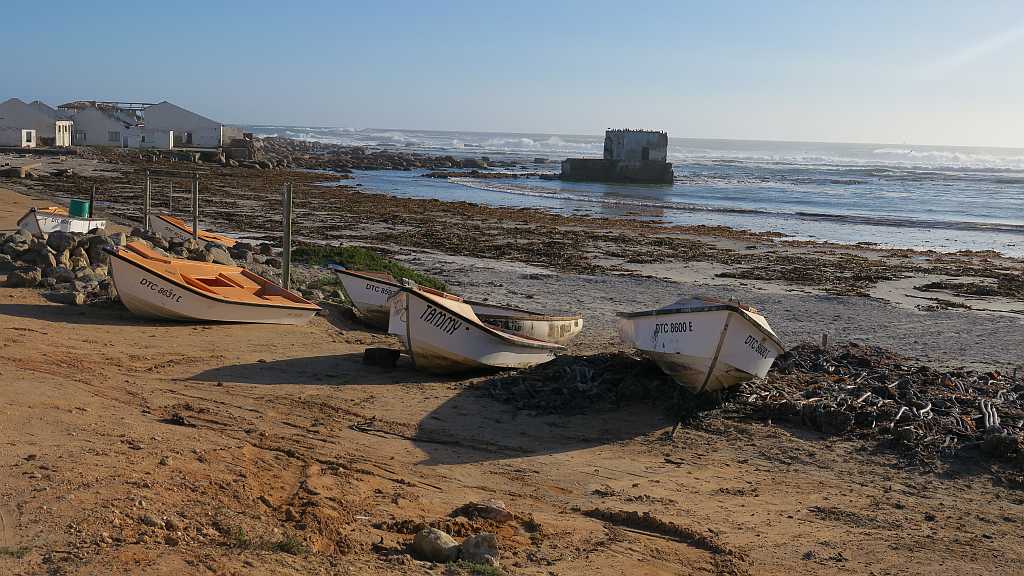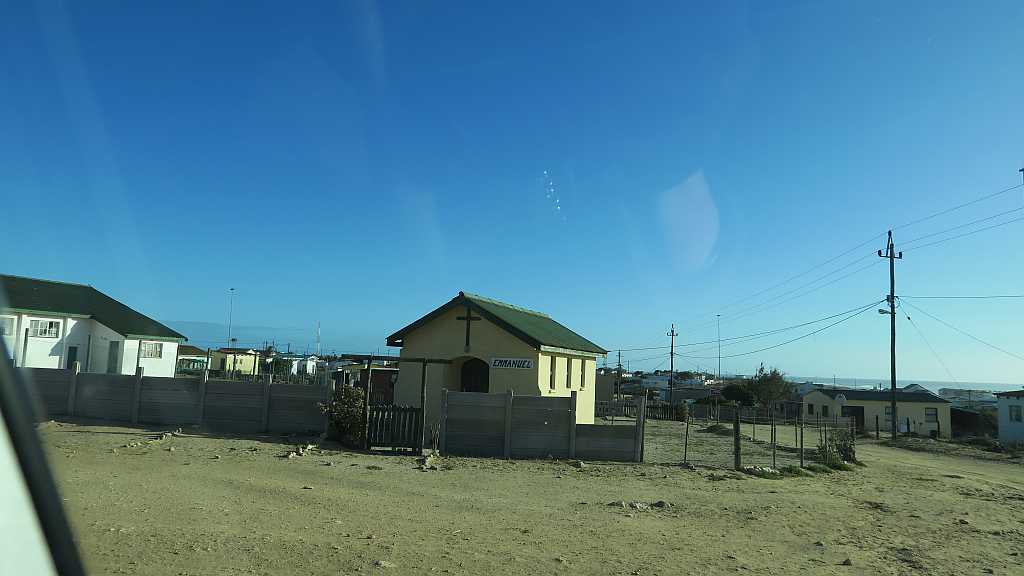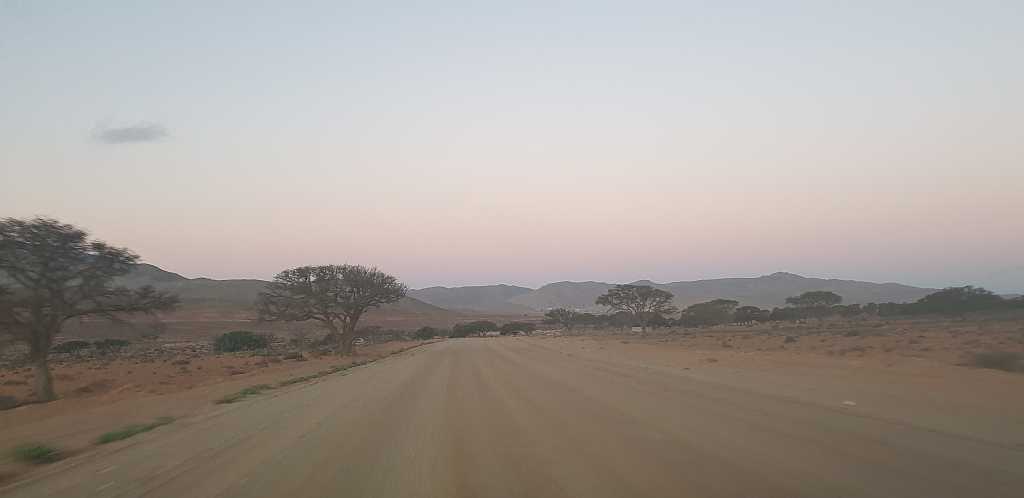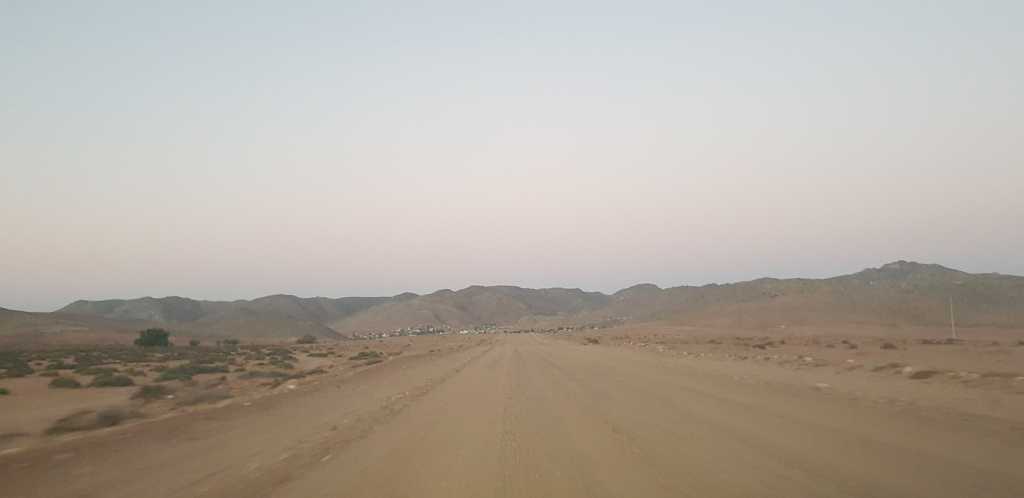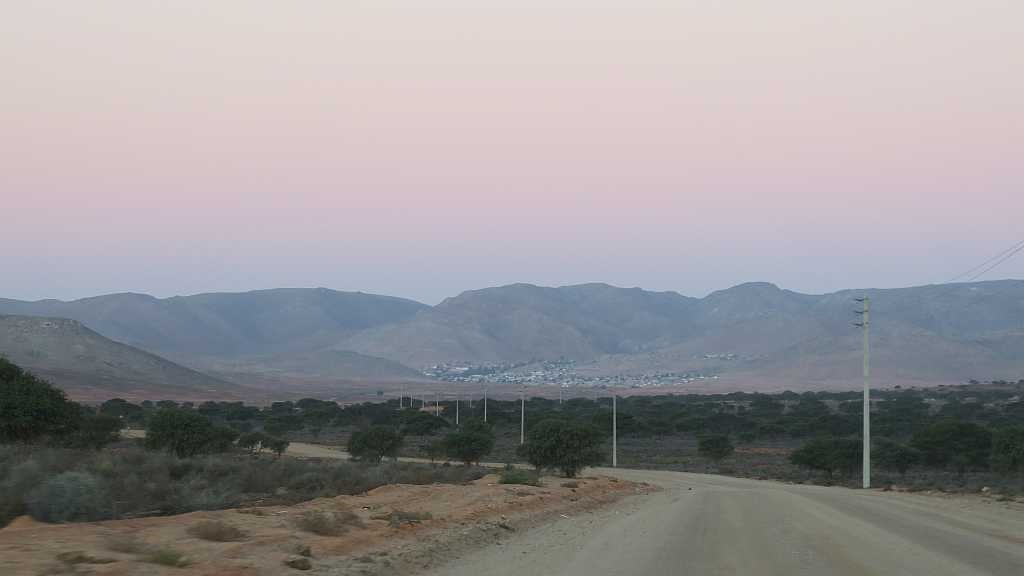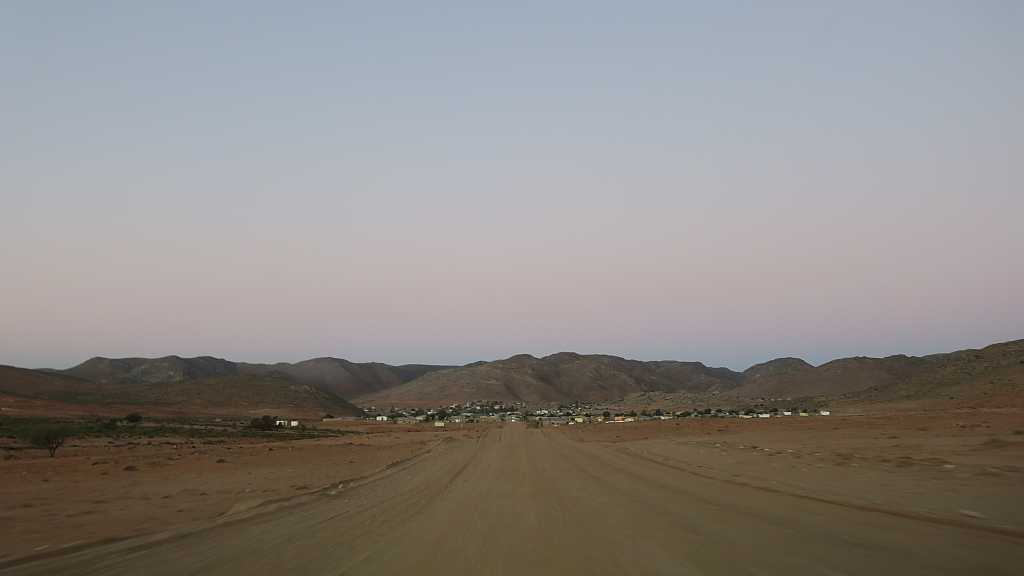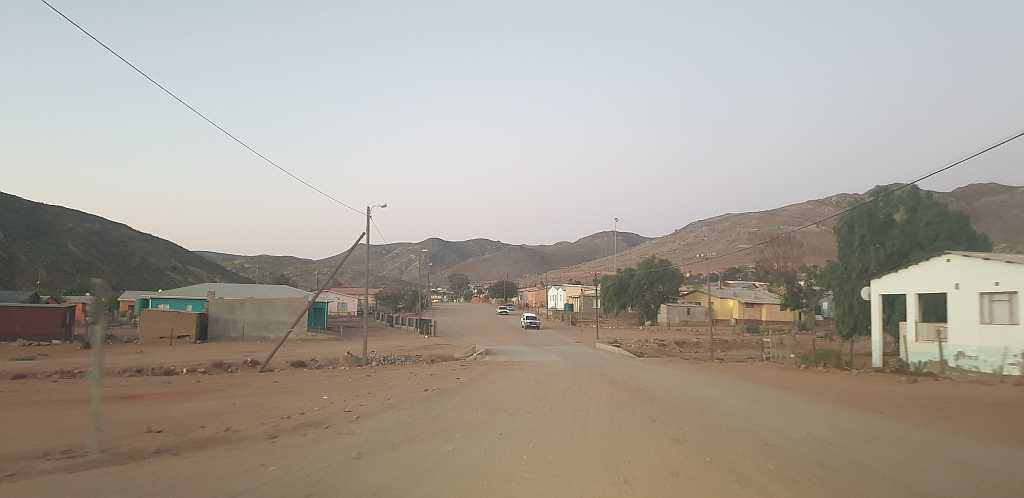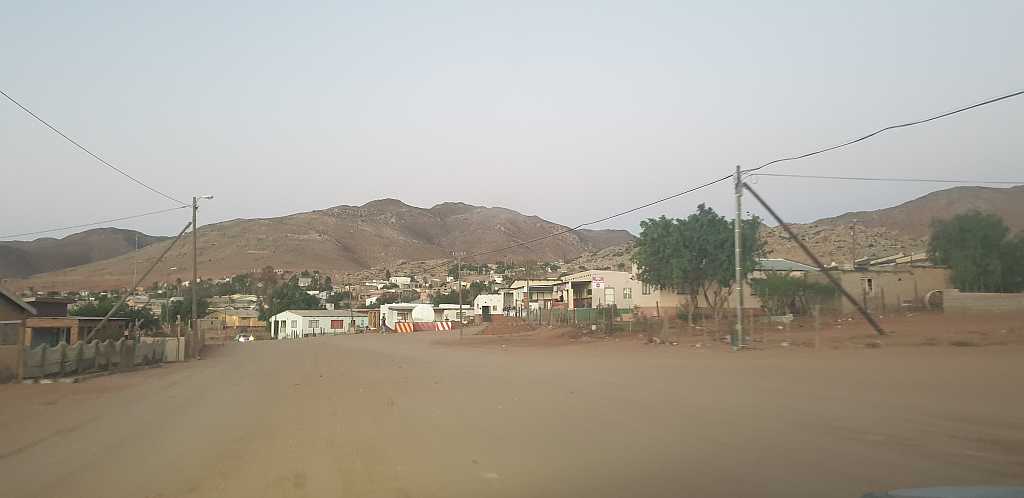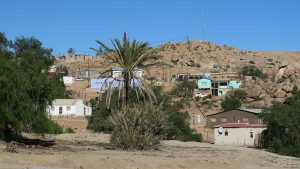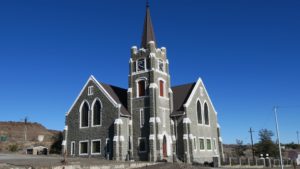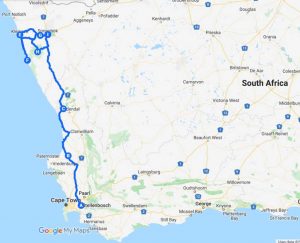A farmer shot in cold blood and diamonds strewn about, ready for the taking? Today we enter the world of pioneers and smugglers, of desolate mines and plains.
Danny is our tour guide today. He grew up on Naries his dad bought many years ago. We leave the farm, turning towards Kleinsee on the West Coast which is some distance off. The road is still tarred here going down the escarpment but it becomes a gravel road at the bottom.
Halfway down the hill we stop. There is a sign indicating a war grave. A local farmer collaborated with the British during the Second Anglo-Boer War as a Namaqualand Border Scout. He was informing the Brits on the positions of Boers in the area. He was executed and buried here by Boer supporters in 1902.
A couple of kilometers further down the road, just after it turns to gravel, we turn right into the Spektakel mining site. This is an old copper mine and you can still see the shaft declining into the side of the hill. The area is strewn with little rocks with the blue-green tint of copper ore. There are a number of these old mines in Namaqualand.
Another couple of kilometers down the road we stop at another mining site. The techniques they are using are quite simple – it looks like they are merely reworking the area after bigger companies have left. Danny tells the story of many years ago when his dad also mined there and he thought it a good idea to show movies to the workers over the weekend to break the boredom. One night he noticed that there was a lot of dust in the air making it difficult to see the screen. It was the workers who were looking for diamonds while they were supposed to watch the movie! Along the road one notices informal miners mining here and there – some even underground. It is clear that some people are still convinced that there are enough diamonds to make a living.
In the middle of nowhere, as the road to Kleinsee rises slightly to cross a neck in the hill, we come across the ruins of the dilapidated Wolfberg police station that, years ago, were erected to prevent the smuggling of diamonds from the Kleinsee side. It must have been a very boring job – the policemen built a coat of arms on the side of the hill using rocks. It is still there today.
As we approach Kleinsee, we can see it must have been a town with high security. There were gates controlling access to the town and garages at the entrance where you were supposed to leave your car. People leaving town were also thoroughly searched. The town belonged to the De Beers diamond company and boasted restaurants, a hospital, a golf course and other cultural activities. But, as the mining yield dwindled, De Beers sold everything and left. Today, Kleinsee seems to be neglected and very quiet although you do see someone here and there.
We take a tar road running south along the coast to Koingnaas, another diamond mining town that once belonged to De Beers. The road is in such an excellent condition – it looks like it has never been used before. Koingnaas is also quiet but not as much as Kleinsee. There are all sorts of mining structures all over the area. A bit depressing for me.
We drive through and find our way to Hondeklip Bay (it is named after a rock that resembles a dog). This looks like a fishing village right on the beach. Breakers burst into fireworks of drops and mist over the rocks. The brand new police station probably has the best location of all and right in front of its front door is the “hondeklip”. It is a rock about roof height that resembles a sitting dog if you look at it from the correct angle. Even if a lot was happening in town, we cannot explore it because we are running really late and we are only halfway in distance from Naries!
On our way back to Kleinsee, we take a right turn on a shortcut to Komaggas. The dirt road is slippery in places due to the recent rains but I always drive slowly on dirt roads, so it doesn’t bother us. Komaggas is a beautiful little town with lots of character. Its community was also badly affected by the scaling down of the diamond mines. It doesn’t look like any mines were erected in the area, so the town and surroundings do not look industrial at all, but very rural. It is already dark when we arrive back at Naries.
